#this is what i strive my storytelling to reflect. themes and such
Text

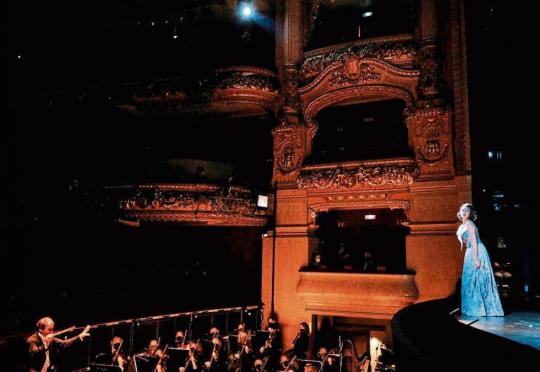

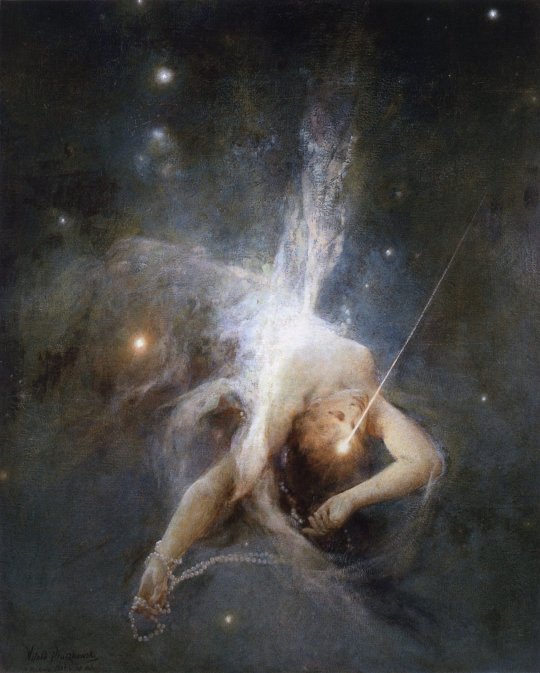
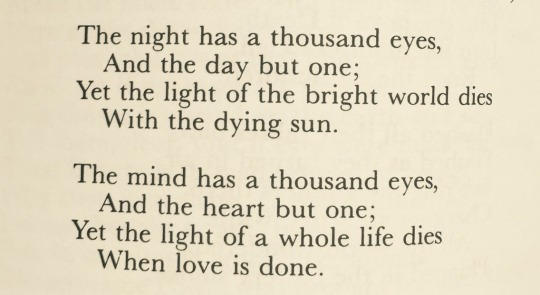




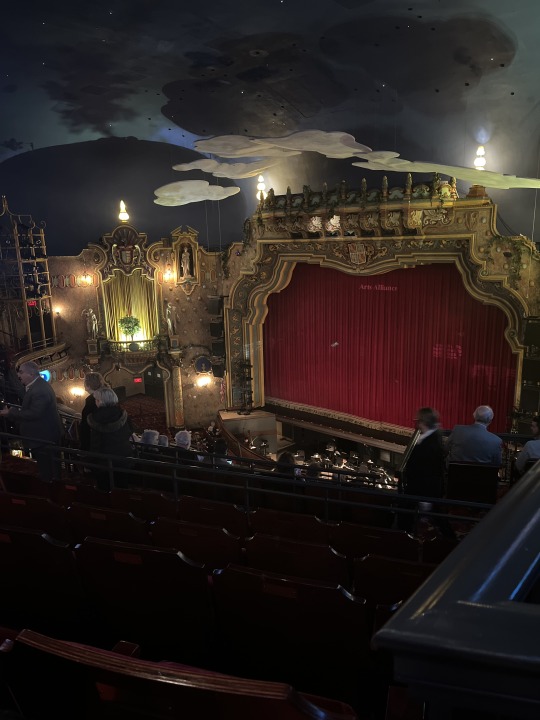




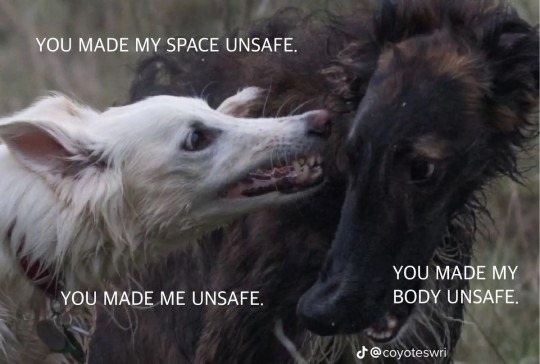

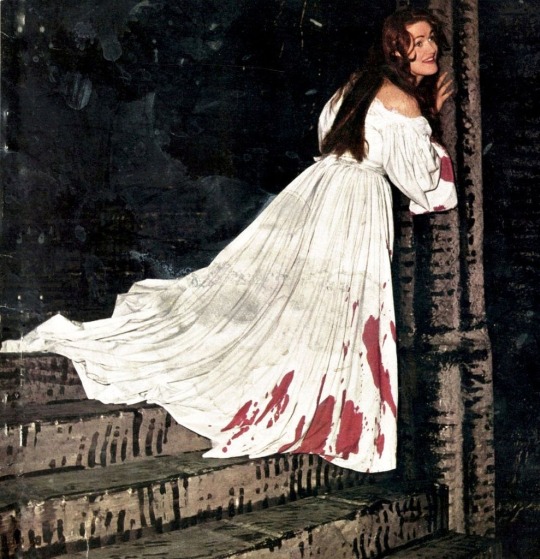



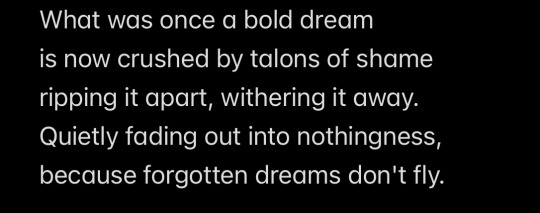
blog thesis statement // what i want my storytelling to reflect.i guess.
(quote from my notesapp // gran theatre del liceu’s 175th anniversary gala featuring soprano lisette oropesa, taken by paco amate // quote taken from the description of this instagram reel by lisette oropesa // spadająca gwiazda by witold pruszkowkski // the night has a thousand eyes by francis william bourdillon // lyric opera marquee, taken by me // untitled prose by me // when “no!” means “no!” by denise griffin on pinterest // “partner in crime” lyrics by madilyn mei // interior of dominion energy center, richmond, va, taken by me // untitled prose by me // from the teatro real’s 2018 production of lucia di lammermoor, featuring lisette oropesa as lucia ashton and artur rucinski as enrico ashton // a rant, by me // @/coyoteswri on tiktok // joan sutherland as lucia at covent garden in 1959 // wikipedia page for sir walter scott’s the bride of lammermoor // lyrics from mitski’s “class of 2013” // interior of the civic opera house in chicago, il, taken by barry brecheisen // a poem i had to write for school )
#aesthetic#listen man i tried#blog thesis statement#a look into my brain#about me.#this is what i strive my storytelling to reflect. themes and such#ash gone silly#i included quite a few bits of my writing actually. just for fun and just because i feel like it fits lol#they’re all older pieces unfortunately but .. alas#all info is under the cut
13 notes
·
View notes
Text
Final Fantasy VII Rebirth: A World Beyond Anger

https://planckstorytime.wordpress.com/
Hello! This is an essay analyzing the themes of FF7 Rebirth through a psychoanalytic lens, while also critiquing the execution of the game's writing. Moreover, it's a personal reflection on my journey with the game, and the complicated feelings that got tangled up with that. Please give it a read if you have the chance.
Previous articles:
FF7: Reflections of a Traumatized Generation (2020)
I Need to Talk about Final Fantasy VII Remake or My Head Will Explode (2021)
Excerpt:
“A confluence of worlds… and emotions. Loss, chief among them. It engulfs fleeting moments of joy, transforming them into rage, sadness, hatred.”
– Sephiroth, Final Fantasy VII Rebirth (2024), speaking to me, specifically
*The following contains spoilers*
I. Memoirs of a Neurotic Fan
Hoo boy.
It’s been a long four years since Final Fantasy VII Remake (2020) released, and I don’t think I have ever before devoted so much emotional energy to deciphering how I truly feel about a piece of media. Initially, I enjoyed my return to a reimagined world of lovable characters, but unfavorable writing choices and a mind-boggling finale left me feeling torn. Despite striving to maintain an optimistic outlook at the end of my previous essay, my perspective on the game only darkened as the years wore on. Developer interviews constantly oscillated back and forth as to whether they would remain faithful to the original FF7 (1997), or, as the ending of Remake indicated, strike out on a brand new “unknown journey.” That’s not to mention the downright radioactive discourse among fans, combined with the litany of harassing messages I received for the most tepid criticisms.
Eventually, I grew to despise Remake. The positive emotions and ecstatic love I had for parts of the game sunk beneath my waves of ire toward its creative divergences – as well as what they represented to me. And I fed that hate. I hated its ponderous navel-gazing about the nature of adaptations. I hated its self-congratulatory insinuation that asinine story decisions like the “Baby’s-First-Metacommentary” Whispers and the resurrection of multiple deceased characters somehow constituted “bold” storytelling. I hated the uncritical portion of certain audiences that fell for this illusion of transgressive storytelling, all the while embracing a game that went out of its way to barrage the player with fanservice and puerile pandering. I hated the frequent argumentation that “it’s not a remake, it’s a sequel” was somehow seen as a mitigating factor, when it actually further aggravated my problems with it. I hated Remake’s emphasis on novelty, its subversion without meaning, its arrogant alienation of new audiences that wanted to experience a classic story, and its implicitly cynical view on thousands of years of storytelling tradition for the sake of “surprise.” To quote director Naoki Hamaguchi:
“When you try to remake a game and make it an entertaining game, having the exact storyline as the original would lack the excitement and surprise. I was looking for an essence to add to the story, and Zack was chosen to be this essence because in the original, there wasn’t much story about Zack, but in Crisis Core, he had a huge character development.”
But that lonely ember of hope persisted; after all, I had loved Remake at one point. I hated that stubborn attachment most of all. By the time Rebirth was fully unveiled, I wanted only one thing from it: to repulse me to my core, to be something so egregiously offensive to my sensibilities that I could never associate the project with anything positive again. “Perhaps if things get stupid enough,” I thought, “others will also see the emperor’s nakedness.” Pain and despair morphed into objects of desire for me. They were my keys to escaping these contradictory feelings of love and hate.
As you can see, I am quite well-adjusted and able to engage with art in a healthy way.
Continue Reading
#planckstorytime#writing#essay#analysis#ff7#ff7 rebirth#ff7 remake#final fantasy#final fantasy vii#final fantasy vii rebirth#final fantasy vii remake#final fantasy 7#final fantasy 7 rebirth#final fantasy 7 remake#tetsuya nomura#naoki hamaguchi#yoshinori kitase#cloud strife#cloud#tifa lockhart#tifa#cloud x tifa#cloti#barret wallace#barret#vincent#vincent valentine#aerith gainsborough#aerith#yuffie
5 notes
·
View notes
Text
Love and Light
Love and light are powerful symbols that resonate deeply with the essence of my blog. Love, with its warmth and compassion, has the ability to connect people and heal hearts. Light, with its brightness and illumination, symbolizes clarity, enlightenment, and guidance in times of darkness. By choosing these words to represent my blog, I am not only embracing positivity but also spreading kindness and hope to my readers. I focus on love and light signifies your commitment to uplifting and inspiring others, making my blog a beacon of positivity in a world that sometimes feels overwhelmed by negativity. Keep shining your love and light through your words and continue to make a difference in the lives of those who seek solace and encouragement.
In my blog post "Photographer's Eye," I explored five images captured with my mirrorless camera. While I used the term "candid moments" to depict the photos, the underlying theme, especially in the image descriptions, revolves around love. These images portray the affection and brightness exchanged among individuals, and I find it truly captivating to have captured such moments on camera.
As I sift through each image, I am reminded of the beauty that lies within the simplicity of human connection. The way a smile can light up a face, how a gentle touch can convey a world of emotions, and the way eyes meet, revealing unspoken stories. It is in these fleeting moments that love truly shines through, capturing the essence of what it means to be human. Each photograph tells a unique tale, a chapter in the grand story of life, frozen in time for us to revisit and cherish. Through my lens, I strive to capture not just faces and places but the very essence of love and connection that binds us all together.
In the blog post I created titled "Public Art" I looked at a sculpture of Romeo and Juliet that is here on my local FSW campus. What more can symbolize love than a sculpture of one of the greatest love stories in English literature? The sculpture stands tall and proud, capturing the essence of Shakespeare's tragic lovers in a timeless embrace. As the sun sets behind it, casting a warm glow over the campus, the figures seem to come to life, their love story unfolding before the eyes of all who pass by.
Public art has a unique way of bringing beauty and storytelling to our surroundings, adding depth and meaning to our daily lives. The sculpture of Romeo and Juliet serves as a powerful reminder of the enduring themes of love, passion, and tragedy that resonate with people from all walks of life. It invites us to pause, reflect, and appreciate the artistry and emotion captured in its intricate details. This piece of public art not only enhances the aesthetics of the campus but also sparks conversations and connections among those who encounter it, fostering a sense of community and shared appreciation for the arts. As we admire this sculpture, we are reminded of the universal language of love that transcends time and space, touching our hearts and inspiring us to cherish the beauty and complexity of human relationships.
In this blog post, I delved into the intricate world of abstract images, exploring the essence of light in art. As I gazed upon a mesmerizing painting, I found myself drawn to its vibrant hues and captivating forms. The play of colors reminded me of a joyous sunset, casting a warm glow that evoked a sense of tranquility and wonder.
Through my analytical lens, I uncovered the subtle nuances of light within the artwork, unraveling its hidden depths and underlying emotions. Each brushstroke seemed to dance with the essence of light, creating a symphony of colors that spoke to the soul.
As I reflected on the beauty of the painting, I realized how light can be a powerful force in art, shaping our perceptions and eliciting a range of emotions. It serves as a beacon of inspiration, guiding us through the shadows and illuminating the path to creativity and self-expression. "Abstract Images" encapsulated my journey of discovery, where light became the thread that wove together art and emotion, inviting readers to embark on a visual adventure of light and color.
By connecting with my audience through my blog, I have found a platform to express my thoughts and ideas freely. The feedback and interactions I receive help me refine my creativity and see things from different perspectives. It's amazing how sharing my work online has not only allowed me to showcase my creativity but also has pushed me to explore new ways of thinking and approaching my craft. The journey of blogging has truly been a rewarding experience, and I am grateful for the opportunity to share my passion with the world.
0 notes
Text
Blog Post #2: Storytelling
Crafting a story is an act of sharing our experiences, shaping them in a way that resonates with our audience. It involves evoking the emotions we felt during those moments. While exploring videos on storytelling, I appreciated the diverse approaches shared by the storytellers. As we age, we may perceive ourselves as less imaginative, yet as children, creativity flowed effortlessly. Despite maturing, that imaginative spark remains within us. We simply just need to rediscover it by reflecting on past experiences that elicited strong emotions, whether joy or sadness. Crafting a compelling narrative requires honesty and perseverance. It often takes multiple attempts before refining our story. One storyteller mentioned drawing inspiration from a personal epiphany, which resonated with me as I aspire to share a challenging experience and the lessons gained from it. In essence, storytelling allows us to convey our unique perspectives and insights, as no one experiences a situation in the same way. By delving into our own experiences and embracing honesty, we can craft stories that not only entertain but also educate and inspire others.
Exploring the world and character dynamics in storytelling fascinated me, as it allows storytellers flexibility in their narrative approach. What ultimately matters is how these elements converge to form a cohesive story. I appreciated how each Pixar storyteller articulated their unique creative process, offering valuable insights. For instance, one storyteller found resonance in Toy Story due to its exploration of growing up and overcoming hardships, showcasing the importance of connecting the narrative to broader themes. This perspective challenged my previous belief that character development solely drove a story's value, highlighting the significance of the world in which characters exist. However, while I find value in this perspective, I prioritize delving into my characters' struggles and aspirations as a foundation for crafting a compelling narrative. As one Pixar storyteller stated, characters may evolve uniquely, but the consistency of their environment serves as a backdrop for their journey throughout the plot.
The section on pondering "what ifs" particularly resonated with me. I found the insight from one of the storytellers intriguing, suggesting that posing these questions allows us to tap into our imaginative faculties by momentarily setting aside logical thinking. This perspective reminded me that storytelling doesn't always require intense analysis. Sometimes, it's about reconnecting with our inner child and allowing our minds to wander freely to more imaginative realms. This notion struck a chord with me, as I sometimes feel pressured to constantly generate original ideas. However, I've come to realize that creativity takes time to flourish and isn't automatically unlocked. Instead, it's about embracing the process, asking "what if" questions, and letting ideas flow naturally without rushing or overthinking.
The advice from the storytellers will undoubtedly guide me in crafting my own personal narrative. While I dislike making mistakes, I understand that they are an integral part of the creative process. Rather than discarding errors, I can use them as learning opportunities to refine my story. Making mistakes doesn't equate to failure; it signifies progress and growth. This journey will inevitably involve trial and error, but I am committed to continually refining and evolving my story, driven by the initial emotions it evokes within me, striving to make it the best it can possibly be.
0 notes
Text
“I Am YEG Arts” Series: Sharon Rose Kootenay & Jason Symington

Jason Symington (left) and Sharon Rose Kootenay (right). Photos by Jason Symington.
If the two fit, collaborate? For Sharon Rose Kootenay and Jason Symington, it was never a conundrum. Outstanding artists in their own rights, this duo’s collaborative practice is a natural extension of their friendship and respect for one another’s creative practices. Centred on the extensive conversations they have about life, death, love, and art, their public artwork references both Kootenay’s traditional Métis-Cree teachings and Symington’s exploration of visual rhetoric and the zeitgeist.
Friends, artistic collaborators, and seekers at heart—this week’s “I Am YEG Arts” story belongs to Sharon Rose Kootenay and Jason Symington.
How did you first become involved in working with each other? And why do you think the partnership works?
J.S.: We met a few years ago in a photography class I was teaching. After class, Sharon and I would have long discussions about art, photography, and everything else. When we collaborate, we discuss the concept, design, feeling, audience, etc., and there is always a healthy back and forth. I think the success of our partnership stems from these chats. We both like to talk, but we are also excellent listeners, so it’s like the chats have never ended.
S.R.K.: As Jason mentioned, he was my photography instructor… but what he didn’t say was that I was utterly hopeless at it! Of course, the best part of the class was meeting Jason, so we remained very close friends and eventually began an artistic collaboration that brought our strengths into a cohesive and rewarding public-art practice. I think our partnership works because of our friendship—it’s built on the love and respect we have for each other. We are both seekers at heart, striving to communicate, to gain deeper understanding, and to speak as artists.
What themes are you drawn to in your work together? And how do they represent your sensibilities and strengths as storytellers?
S.R.K: I would say that the recurring themes in our work are those of redemption, compassion, and mysticism communicated in ways that are recognizable and only slightly beyond reach. There is a sense of otherworldliness that is expressed through our collaboration that reflects our discussions on spirituality, childhood memories, and land-based experiences.
Tell us about someone who’s mentored you or helped set you on your path.
J.S.: There are a few people I could mention here. But I think going back to the beginning of my art career is where I developed the most as an artist. A special thanks go out to Darci Mallon and Cherie Moses. In very different ways, these fantastic artists/instructors directed me to become the artist I am and are still in my head, making me accountable for my work.
S.R.K.: My maternal grandmother, Flora Lambert, was instrumental in helping me to develop a sense of being, as both a young mother and a fine-craft artist. Flora was a talented, nurturing, and generous maker, spending her time creating gifts for those she loved. She set a wonderful example for me, encouraging me to make art and to stay true to our Métis heritage and family values.
What’s one piece of advice someone gave you growing up that turned out to be true. What’s one piece that didn’t hold up?
J.S.: Gary Neil Kennedy, in a one-on-one during my undergrad at NSCAD, told me I needed to understand my work from both sides: my side and the viewer’s side. It's been the way I’ve looked at my work ever since. I can’t say that I remember a piece of advice that hasn’t held up. I mean, there has been advice that wasn’t good. You just hope you recognize it before it goes bad.
S.R.K: Years ago, I took a Myers-Briggs Indicator Personality Type Test. The results left me with only two occupational choices: librarian or artist. Luckily for me, I followed both these career paths and found a lot of satisfaction in each of them. Coincidentally, Myers-Briggs is based on Jungian psychology, which has remained compelling and continues to inform my artistic practice to this day. The only advice I recall that hasn’t held up was someone telling me that I needed to stop being interested in so many things!
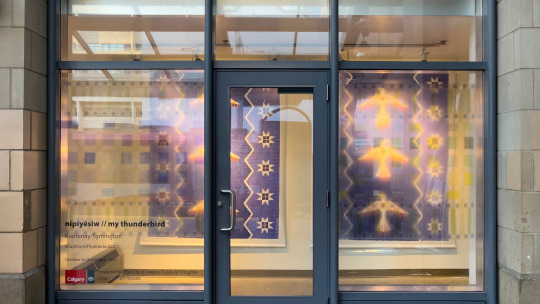

Nipiyesiw // My Thunderbird (top) and Kaskitewastim // Dark Horse (bottom) by Sharon Rose Kootenay and Jason Symington. Photos provided by the artists.
What does community mean to you, and where do you find it?
J.S.: Community is essential. It gives you support to create when the world around you might not know what it is you are trying to accomplish. I have been fortunate to have a readymade community through teaching. I am surrounded by practicing artists across multiple disciplines and by engaged students who want to challenge the system. Partnering with Sharon is also a wild ride, as she knows everyone.
S.R.K.: The Edmonton arts community is wonderfully vibrant, offering a constant source of creative ideas, kindred spirits, and fun events filled with amazing works of art, literature, and music! I am always happy to be amongst fellow artists and those working within the arts sector. This is the community where I thrive, and I appreciate it so much!
What is it about public art that inspires you not only to create it but to champion it?
J.S.: The connection to the audience. Public art is essential because it engages people in their environment. Look at Anish Kapoor’s Cloud Gate, Louise Bourgeois’ Maman, Tino Sehgals’ Special Project Art City, or Jean-Paul Riopelle’s La Joute. These works don’t just engage with the people who live near them, they engage with people from around the world.
S.R.K.: Through ongoing conversations with Jason, I was able to understand and connect more fully to the practice of public art. Creating a dialogue with Jason that ripples out to an audience inspires me and holds great appeal. It’s the ongoing conversation and feedback that becomes the important thing, especially in the age of social media.
When you’re taking a break from a project, what will we likely find you doing?
J.S.: I don’t do very well taking breaks. If Sharon and I aren’t working on a project together, I am working on personal projects, photography, screenplays, and documentaries. If I am not working, I watch films and hang out with my family.
S.R.K.: As a beadworker, I thrive on a creative, daily routine that keeps me calm and centred. Because beading is such a slow-stitch craft, some of this daily work becomes part of the visual catalog that Jason and I will draw from for our collaborative projects. I also enjoy visiting with friends, live music, reading, and gardening.

Transformation: Promise & Wisdom by Sharon Rose Kootenay and Jason Symington at the 2021 Works Art & Design Festival. Photo by the Edmonton Downtown Business Association.
Tell us a little about what you’re currently working on together or hoping to explore next.
We are currently working on a larger mobile public artwork that continues our exploration of representation, and the “other.”
Describe your perfect day in Edmonton. How do you spend it?
J.S.: It would be a day in late July or early August. Hot, but not crazy hot. I would casually kayak down the North Saskatchewan River with my family and friends. Seeing Edmonton from the North Saskatchewan River is something not many people do, and it is impressive.
S.R.K.: I would also be on the move—driving my car through the city with family or friends riding shotgun—down Groat Road, across Dawson Bridge, touring through old neighbourhoods and places of connection. Windows down and singing along to a vintage playlist!
What excites you most about the YEG arts scene right now?
J.S.: Potential. I think the YEG arts scene keeps getting more robust due to the potential of the artists working in and around Edmonton. It is also great to see the growing variety of mediums exhibited in the city, and kudos to the people making things happen here.
S.R.K.: I am quite excited by the new work being created by young Indigenous artists of all genres. As a senior artist and long-time Edmontonian, it’s been a wonderful thing to witness the evolution and presentation of Indigenous art forms, from the late 1970’s to the present day.
Want more YEG Arts Stories? We’ll be sharing them here all year and on social media using the hashtag #IamYegArts. Follow along! Click here to learn more about Sharon Rose Kootenay and here for more info about Jason Symington.
About Sharon Rose Kootenay & Jason Symington
As a Métis-Cree artist, Sharon is inspired by traditional Native women’s creative practices, her grandmother, Flora, and her sisters, as well as historical and contemporary artists. Sharon’s beadwork transcends boundaries and references traditional teachings, the Female Gaze, and the transmission of cultural lifeways. The designs Sharon creates speak to the spiritual realm, the current socio-political climate, and environmental issues. Her work demonstrates the authentic cultural perspective of constructing an open and honest dialogue with the viewer to foster a greater understanding and appreciation for all peoples.
Jason is a conceptual artist who uses visual rhetoric to engage his audience. He incorporates theory, concept, and various media to create his messaging. Theories of alienation, identity, sexuality, and the “other” play dominant roles in Jason’s work. The media vehicles (stills, motion, audio, etc.) delivering his messaging operate through the codes and conventions of the zeitgeist. The goal of Jason’s work is to interpolate his audience to gain greater insight into the “other.”
Sharon and Jason’s collaborative practice is an extension of their friendship and respect for each other’s creative practice. The collaborations centre on the extensive conversations the duo has about life, death, love, and art.
0 notes
Text
I Made Stuff in 2020
Shoutout to @nevermindirah for the tag
Rules: It’s time to love yourselves! Choose your 5 favorite works (fics, art, edits, etc.) you’ve created this year and link them below to reflect on the amazing things you’ve brought into the world in 2020. If you don’t have five published works, that’s fine! Include ideas/drafts/whatever you like that you’ve worked on/thought about, and talk a little about them instead! Remember, this is all about self-love and positive enthusiasm, so fuck the rules if you need to. Have fun, and tag as many fellow creators as you like so they can share the love! <3
In 2020 I re-watched Leverage, which led me to tumblr, which led me to seeing these posts about this movie The Old Guard, which led me to watch one of the best films I’ve ever seen, which led me to AO3, which led me to discord. Before falling down The Old Guard rabbit hole, I hadn’t written fanfiction since 2012. Unsurprisingly, a lot has changed since 2012 for me and for the internet. For the first time since my participation in internet fandom, I feel like I’ve found a community online and that is probably the big theme of this post: making for each other has been an absolute joy in an otherwise pretty shit year.
This is not really a year in review, so much as a last two months review (my first fic of the year was published on November 2nd) but it’s been a utterly delightful and impactful couple of months, so here we are. On to the fics!
1. The Sport of Bright Steel - This was the fic that started it all. Someone on the Old Guard kinkmeme prompted a Joe/Nicky fic from the POV of their swords and I sat down on my couch one Saturday morning and an hour later had a lil piece of fanfiction all written out. And then I panicked that it was terrible and weird and so posted it anonymously to the kinkmeme. And then someone in the discord rec-ed it in the fanfic channel and then I dusted off my old AO3 account and posted for the first time in 8 freaking years.
2. Our Toil Shall Strive to Mend - This was my second foray back into fanfic (once again, inspired by a kinkmeme prompt), and the first multi-chaptered fic I ever wrote. Big manly man with tiny human? I am weak. I love all of the Old Guard characters, but I think Booker will forever be my favorite to explore in fic. Unlike the others, Booker is a reluctant soldier and much of his pain comes from losing his identity as a husband and father. This fic asks what if Booker’s path to healing comes in the form of fatherhood? Writing the last chapter made me cry happy-sad tears for him.
3. The Perfect Shot - From the idea that both snipers and photographers are in search of “the perfect shot” came this delightfully silly little fic. Nicolo di Genova, sniper and international man of mystery, knows one damn pun/pick-up line and just so happens to find the one man (Joe, photojournalist) whom it works on hook-line-sinker. Everything about this is fun and makes me happy. Never in a million year would I have written this, if not for a very silly post on this website that someone on discord suggested as a Joe/Nicky prompt. Inspiration strikes in the most unexpected of ways. And I fucking love puns, y’all.
4. This Rough Magic - Nicky is a selkie who accidentally get himself married to unsuspecting, marine scientist Joe and it might be my favorite thing I’ve written all year. It’s a story about identity and the unexpected and being willing to take a leap of faith. This fic would not have happened without the discord, and made me so so grateful and happy to be creating with other people and as part of a community. The joy of fanfic is that it is freely created and given, and I never would have dared to write this story without the inspiration, support, and enthusiasm from internet friends.
5. Bring the World Back into Tune - aka my Book of Nile opus, still a work in progress. Technically it’s a Hades/Persephone fusion, but really it’s about finding family, finding healing, and finding love, about making meaningful choices despite whatever fate or the supernatural has in mind. I fell into Book of Nile because who they are beyond being immortal has so much in common: growing up basically ghettoized in a country that doesn’t give a damn about you, fighting for an imperial army because there were no other viable choices, knowing the pain of missing 1st families. In Bring the World Back into Tune I love that I get to explore what it means to be fated for something (they’ve become Hades and Persephone without realizing it, in addition to the whole immortal thing), and also what it means to still get to choose how you arrive at and cope with that fate. Very few people are reading this on AO3, but it’s something I love working on and through because the characters and ideas are so compelling.
Honorable Mention: Leaving AO3 Comments - One of my greatest joys this year has been in giving to others the kind of love and support I’ve received as a person who makes stuff on the internet. I love leaving AO3 comments, and applying my English major brain to what I’m reading. The things we love most are deserving of our critical attention, including and especially fanfiction. I’ve met fandom soul-mates in the AO3 comments and befriended authors. In response to a shitty anon comment on another fic, I crafted what might be my fanfic manifesto: why fanfic is the heir of western storytelling moreso than our popular media and why the “expectedness” of fanfic is in fact its greatest feature, not it’s biggest flaw. It is A+ work, if I do say so myself.
None of this would have been possible without the internet (the kinkmeme, tumblr, discord, and of course AO3) and, perhaps more importantly, without the great, supportive Old Guard fan communities. Thank you for the beautiful fic and stunning art. For the thoughtful meta and funny headcanons. For the cheering and screaming and encouragement. For the kudos and comments. We make for ourselves and each other and that’s a truly remarkable thing.
Thanks to @hyper-fixate @sweetlyenchains and many others for being so lovely and kind and making my 2020 better with The Old Guard fic and art and thinking and community. If y’all are inspired to do this year end recap too (whether tagged or not), please tag me! I’d love to read about your triumphs too!
14 notes
·
View notes
Text
LGBTQ Light Novel Review - Bloom Into You: Regarding Saeki Sayaka Vol. 1
*Contains minor spoilers for Bloom Into You*
I have always said that Bloom Into You is a little bit too popular and awarded more praise than the typical and trope-filled story deserves. However, fame and success have their benefits, and thanks to the series’ popularity, we are gifted with the phenomenal light novel spin-off Bloom Into You: Regarding Saeki Sayaka. This wondrous collaboration between the original creator, Nio Nakatani, and famed Yuri author Iruma Hitoma (Adachi and Shimamura) takes the very best elements of Bloom Into You, namely side character Sayaka and her experiences with LGBT identity and life and puts them front and center. The result is a beautiful and important coming of age story about a young woman discovering her sexuality. A story that not only escapes the common traps of the Yuri genre but utilizes and subverts them with flawless execution.

The first volume in the Regarding Saeki Sayaka light novel trilogy revolves around the titular character before the events of the main series. The entire book is narrated from Sayaka’s first-person perspective and told in the past tense, with Sayaka occasionally giving brief retrospective insights to contextualize her experiences. This presentation excellently frames the story, giving valuable analysis to its events, heck, Sayaka can probably do my job better than I could. The ex post facto storytelling also pairs nicely with the dramatic irony present in the story, provided that the reader has read the manga or seen the anime. On that point, while the light novel effectively stands on its own legs, reading it as a companion piece and prologue to Bloom Into You will significantly increase the book’s impact.
The first of the volume’s two parts, Year 5 Group 3, paints a portrait of childhood Sayaka. She is serious and mature for her age, often pushing herself to be the best in every area, both academic and extracurricular. However, she has apparent social deficiencies, remaining distant at best, and hostile at worst to others. She is surprised, annoyed, and challenged when a student in her swim class attempts to bond with her. The girl displays a strong affinity for Sayaka and, although at their age describing their connection as romantic or sexual feels inaccurate, she clearly yearns for a bond beyond friendship.
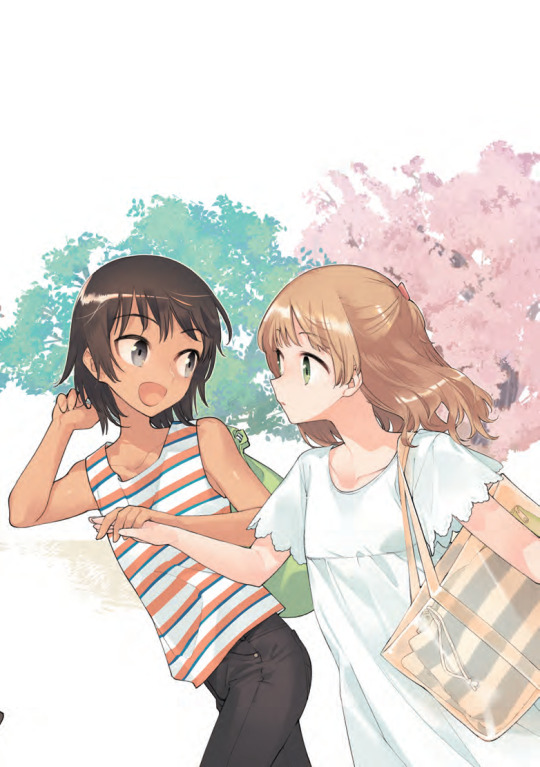
Frustrated by the girl’s advances and erratic personality, Sayaka angrily tells her to be more serious. Determined to win Sayaka’s affection, the girl attempts to mimic Sayaka’s mature demeanor. This act subconsciously implants the idea in Sayaka’s head that people must change themselves to suit the ones they desire, a lesson which later proves dangerous for her. Soon after, Sayaka begins experiencing strange feelings for the girl, which further her frustration. The confused Sayaka attempts to explain away her emotions, “I mean, the person next to me was a girl, and so was I.” However, after a sexually charged moment in the pool, the fearful Sayaka runs away and quits her swimming class.
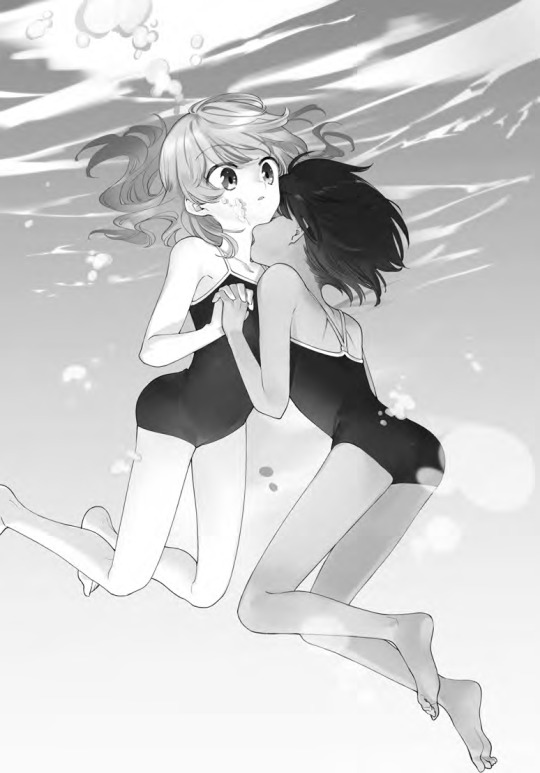
This first chapter effectively lays the foundation for Sayaka’s sexual awakening and foreshadows some of the situations in which she will later find herself. Although Iruma’s prose, and Jan Cash and Vincent Castaneda’s translation’ is expressive and beautiful, capturing Sayaka’s inner voice superbly, there are a few flaws. The service described, including details about the locker room and the girls’ swimsuits, is incredibly awkward, especially considering the elementary school-aged characters. The climactic moment between the two, while appropriately dramatic, is undercut by this exploitation and its inherently ridiculous nature. Thankfully the second half of the book, Class 2-C, Tomosumi Girls’ Academy, lacks the off-putting elements of the first and perfectly sets Sayaka up as the character we know and love from the original series.
As Sayaka enters middle school, she becomes slightly less rigid and strict than she was as an elementary schooler. Instead, she is an excellent reflection of the girl seen in the original series, a serious and driven person but reliably kindhearted. She joins the choir club, where she meets Yuzuki Chie, referred to almost exclusively as “Senpai.” Followers of the original will quickly come to recognize this character as Sayaka’s ex-girlfriend, briefly seen in the manga and anime. Yuzuki confesses her love for Sayaka, leaving the latter to ponder the implications of dating her.
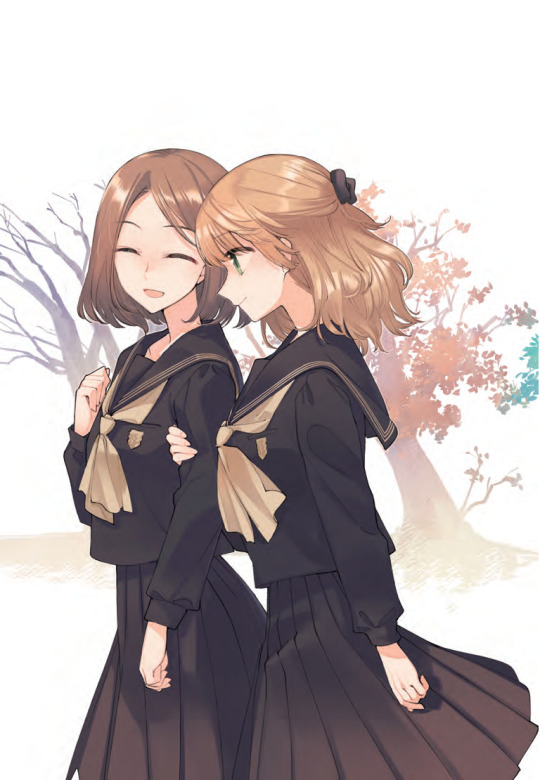
The sequence which follows this confession is nothing short of masterful. A once again conflicted Sayaka struggles to comprehend the possibility of dating Yuzuki. She thinks of the potential relationship as both one between two individuals and as a romance between two people who are both women. In the end, she decides that, although she does not yet love her senpai, she wants to try dating. Their relationship is full of adolescent naivetés and fluttering emotions.
Sayaka lacks a reference to healthy love and relationships, so, just as the girl from her swimming class did, she changes to become a figure that Yuzuki can love, telling her what she wants to hear and doing what will make her happy. For example, although Sayaka does not enjoy novels, she visits a bookstore, which turns out to be the Koito family’s, to buy and read one of Yuzuki’s favorite books. Eventually, their relationship escalates, and Sayaka admits that she has fallen in love with her partner. However, after moving up to high school, Yuzuki begins to pull away from Sayaka.
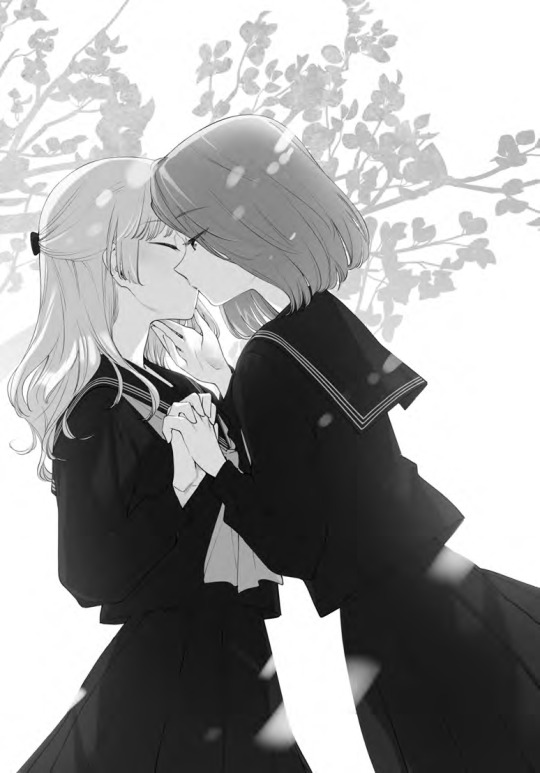
Their ultimate showdown and break up is reminiscent of Class S literary themes, with Yuzuki claiming the relationship was play, acting out, and mimicking fiction’s prevailing narrative of romance. However, now that they are nearly adults, and as they are both women, the “play” is no longer appropriate. Sayaka, however, does not feel the same way, and herein lies Regarding Saeki Sayaka’s pure brilliance. Iruma subtly and expertly hides small lines and hints to this difference throughout the book. Yuzuki speaks mostly in romantic clichés as if imitating romance movies or books, “Senpai often speaks like she’s in a story.” However, Sayaka shows genuine commitment and devotion to her partner, working (foolishly) to change herself for Yuzuki and occasionally thinking of their future together, once wondering if they would be together when they were old ladies.
Their actions contradict each other’s so much because Sayaka, the girl who strived to be mature and act like an adult from an early age, does not see the relationship between two girls as immature or a game. To her, it was a very genuine experience that helped lead her to her ultimate revelation and the light novel’s amazing final lines, “I accepted it. It wasn’t understanding or resignation, just acceptance. Of myself, and of the fact that I could only love girls.” Here both the author and the character have openly rejected the S era ideas that love between women is fleeting and childish, Sayaka comes to see herself as a gay woman (although she sadly does not employ this specific terminology). Here the book elevates itself past the original series and embraces the more modern and queerer era of Yuri.
Iruma Hitoma has done the impossible, taking a good Yuri story and transforming it into a great one, rewarding readers with a thoughtful and nuanced experience detailing a young woman’s confusion and strife as she discovers her identity. It is by no means perfect, as all the side characters are thin and underdeveloped, yet they do not need to be. This story is exclusively Sayaka’s, and the others exist only to serve the amazing development and growth gracefully communicated in this stunning light novel.
However, as I wrap up this review, I cannot help but think of how much easier Sayaka’s experience would have been, how much clarity she may have had, and the pain she could have avoided, had she learned about LGBTQ identities and experiences before her tribulations. It is so essential for the young to see positive representation of all peoples in both fiction and reality as they grow up, and perhaps ironically, Bloom Into You: Regarding Saeki Sayaka Volume 1 has joined the elite ranks of titles which can positively impact the lives of its readers. It contains a wonderful, authentic, and grounded story of coming to terms with one’s sexuality. This light novel is an absolute must-read, even if you are not a fan of the original series, and I cannot wait for its continuation, especially as the upcoming third volume hints at a tale about a happy Sayaka and her girlfriend.
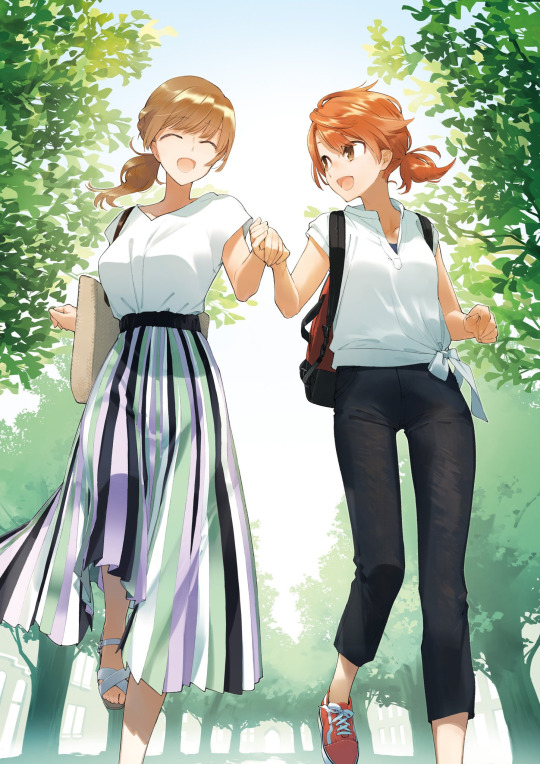
Ratings:
Story – 10
Characters – 9
LGBTQ – 9
Sexual Content – 4
Final – 9
Order Bloom Into You: Regarding Saeki Sayaka here: https://amzn.to/31QgIaR
Review copy provided by Seven Seas Entertainment @sevenseasentertainment
#reviews#lgbt#yuri#lgbtq#lgbtq+#queer#bloom into you#Yagate Kimi ni Naru#girls love#gl#wlw#gay#coming out#representation#anime#manga#light novel#literature
256 notes
·
View notes
Note
I love Isayama but the recent chapters has made it really obvious how hard he is trying to make the alliance and marley seem like the good guys. He's trying so hard that everything is just filled with double standards and hypocrisy for it to work. I just want to see Eren at this point, it's all i care about. The rest can choke
I like to believe that this isn’t so much Isayama forcing a particular perspective on us but him using the nature of storytelling to prove a point. See, one of the major themes in snk is how perspective changes the story and introduces bias (take Ymir’s backstory for example: both sides got some things right about her but neither nailed the full truth). So to me, Isayama is proving this by flipping the point of view from which the story is being told from.
Looking at the majority of the fandom, it’s easy to see how quickly people changed sides because the story is now favouring the perspective of the group we were previously viewing as the antagonist. Since stories are classically told from the perspective of the “good” guys, people tend to immediately demonize the opposition. But snk strives to prove how this is a dangerous mindset to have. So I’d like to think Isayama is doing this as a test to the audience in hopes of making the reader realize their own hypocrisy, kinda like he did with Major Gross.
That’s why when it comes to the timeskip, I do appreciate the change in the lens of storytelling even if I don’t support the side it’s being told from and I’m not a fan of the characters it’s favouring. I may have not initially liked it, but the experience is eye-opening in my opinion.
Having said that, a part of me is getting more and more worried that maybe Isayama is actually pushing this perspective on purpose to end the story on a “morally correct” note. Given the fact that he’s previously said in an interview that he doesn’t want the series to pass moral judgment on what’s correct or not, I’d like to believe he does mean for the reader to form their own opinions/conclusions instead of pushing a particular narrative on them. But at the same time, he’s talked about how he changed the ending to accommodate the audience’s wish so I’m worried he has been pressured into straying from his own desires... I guess only time will tell :/
Lastly, as frustrating as I find the Alliance, I think part of the reason we intellectuals are annoyed at these characters is because their decisions are realistic. We’re so used to characters behaving a certain way because they’re fictional, but to me, Isayama captured the complexity of humans by making the characters so hypocritical. After all, you can see that hypocrisy reflected in the readers that support them too.
#asks#sorry if this makes no sense#it does to me lmao#snk 129#snk spoilers#snk themes#snk analysis#isayama hajime#snk ending#snk speculation#snk fandom#snk thoughts#my opinion
55 notes
·
View notes
Photo

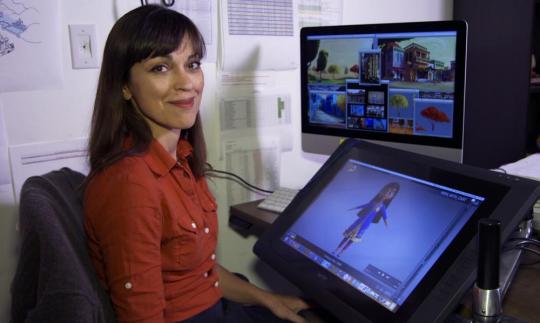
A Musical, Mystery Masala: Meet ‘Mira, Royal Detective’
Disney Junior’s colorful new animated series offers a window to the beautiful colors, music and culture of India.
Cooped-up parents and their preschool kids who are looking for a fresh way to be entertained this week will have a new savior. Her name is Mira, the star of the CG-animated series Mira, Royal Detective, bowing on Disney Junior on March 20 Stateside (March 22 in India).
Developed by Becca Topol (Elena of Avalor), who also serves as story editor, and exec produced by Emmy-nominated industry veteran Sascha Paladino, the beautifully imagined show centers on a resourceful young girl (voiced by Leela Ladnier) who takes on the role of royal detective after being appointed by the Queen. Inspired by the vibrant colors, music and culture of India, the show follows Mira and her friends Prince Neel (Kamran Lucas), cousin Priya (Roshni Edwards) and funny mongoose pals Mikku (Kal Penn) and Chikku (Utkarsh Ambudkar) as they travel their fictitious world of Jalpur, solving mysteries and helping the characters they meet along the way.
The voice cast also features Freida Pinto, Hannah Simone, Jameela Jamil, Aparna Nancherla, Aasif Mandvi, Karan Soni, Maulik Pancholy, Sarayu Blue and Sarita Choudhury.
Paladino, who also created Disney’s Miles from Tomorrowland (Mission Force One) and has written for numerous children’s animated shows such as Doc McStuffins, The Octonauts, Wonder Pets! and Sid the Science Kid, says he was thrilled when Disney asked him to run the series about two years ago. “It was a real honor to be asked because it’s an important show, and it combined my love for using children’s TV to explore a culture and help create Disney Junior’s first South Asian protagonist,” he says.
He says he loves the fact that the show takes its inspiration from Bollywood movies and that everyone involved strives to present an authentic and whimsical representation of Indian culture to young viewers. “We watched a lot of Bollywood films to prepare for the show, and one of the hallmarks of these movies is their big, musical numbers,” Paladino says. “So the chance to depict that in animation with dance and lots of characters, using authentic Indian music and instruments was so exciting for me.”
Paladino’s Passage to India
Paladino and some of the other key creatives behind the show actually visited India to get a more accurate, in-person feel for the culture they were hoping to showcase in Mira, Royal Detective. In addition, the film’s animation is produced by Bangalore-based Technicolor India, so they were able to get more feedback and accuracy checks from their animation team in the country throughout the production process.
“We were really inspired by the Indian culture on every level,” says Paladino. “We really wanted to get it right and are striving to represent the design, the music, the storytelling, the dance and choreography in each and every episode. Our animation studio in India is a perfect match, and they are truly our collaborators. They weigh in and give us their feedback on the show. I was lucky enough to go to India and meet with them, and it was incredible to see the pride they take as they’re working on this show that will represent their culture to the world. We don’t take that lightly. It’s a big responsibility, but it’s also a huge privilege to be able to work on a show that is going to have that rich and hopefully as big an impact on audiences.”
Not surprisingly, the show also employs a team of experts who offer their feedback on various aspects of Indian music, dance and culture. Shagorika Ghosh Perkins is Mira’s cultural consultant and consulting producer, offering her tips on costumes, music, food and set design to specific holiday traditions and festivals. Amritha Vaz (Miss India America) serves as the music composer. Deepak Ramapriyan (Basmati Blues) is the music consultant on the series and also provides additional orchestration for the song arrangements, while world-renowned musician Zakir Hussain plays tabla on the theme song. In addition, acclaimed Bollywood choreographer Nakul Dev Mahajan (So You Think You Can Dance) is the show’s dance consultant and choreographer.
“It’s been great to work with Amritha Vaz on the show’s music, and it’s very important to her and to us that we use as many authentic Indian instruments such as tabla, sitar, shehnai and others as possible,” says Paladino. “Music expresses so much about any culture, and South Asian culture is no different. For example, Mira is a great tabla player, so audiences will get to see her play that instrument in many of the episodes.”
The show’s look and overall visual style is also a reflection of this quest for authenticity. “We were inspired so much by what we could find online and in real life in South Asia,” says Paladino. “We wanted to reproduce the colors of India, and there’s such an incredible tradition of Indian art through the centuries, and we really wanted to honor that. Although our show is CG animated, we wanted to bring this special stylistic touch to the visuals, so you’ll see mandala patterns in the clouds, or the smoke that comes out a train stack is in the shape of traditional Indian patterns.”
An Eye for Details
Series art director Dorothea Gerassimova says when she first met with Paladino about the project, she was fired up by all the possibilities the show offered to really convey the beautiful art, patterns and culture of India. “I was so energized and inspired that I couldn’t sleep at night,” she says. “I think the show gave us such a fantastic opportunity to create this wonderful, stylized world — from the trees to the palace to the marketplace. I was so pleased that I was given free rein to stylize it and asked to create something that didn’t look like anything else on Disney Junior.”
Gerassimova says she loves that the show centers on a strong, smart young girl who is not afraid of challenges. “I love that Mira never jumps to conclusions,” she says. “She always asks questions and wants to look at things closer. She is not a princess, which is very refreshing, and she always works with her team to come up with solutions. I also really admire the show’s emphasis on family values and multigenerational bonds, and the fact that we were able to weave in all the real inspiration we could find about Indian architecture, art, colors, fabrics and patterns. Of course, Indian art and architecture is so detailed, so it was a big challenge to deliver all those intricate ingredients on a tight TV schedule, but I’m very proud of what we were able to achieve.”
Dorothea Gerassimova
Paladino also points out that he is proud of the fact the production offered South Asian voices and talent to be represented in every aspect of the show, from the writers room to the design, boarding, music, choreography and all the voice cast. “One of my biggest jobs was to listen to everyone. This is not my culture, so we wanted to be sensitive and thoughtful so that we could get it right. So much of what I do is giving the South Asian people who work on the show the opportunity to really have a voice.”
He also hopes audiences will be able to enjoy the delicate balancing act he and his team have been trying to pull off. “We wanted to be very specific about the culture: We’re not saying where in India this show is taking place, but we have a lot of specific cultural touches, so we want people to be inspired to learn more about South Asian culture. At the same time, we want the storytelling to feel universal. Every episode is a self-contained mystery, and those are very universal things.”
More importantly, Paladino hopes kids will recognize themselves in the storylines. “The show is about a group of kids who sometimes get along and sometimes don’t, but mainly, it’s about Mira who is extremely thoughtful and sympathetic. She is able to see things from different perspectives. I just hope after seeing our show, kids will think more about how other people see things and will be encouraged to think more about others around them. That’s what Mira does!”
Mira, Royal Detective Premieres on Disney Junior (U.S.) on March 20.
22 notes
·
View notes
Text
When the Light of the World was Subdued, Our Songs Came Through - Ed. Joy Harjo - Part I
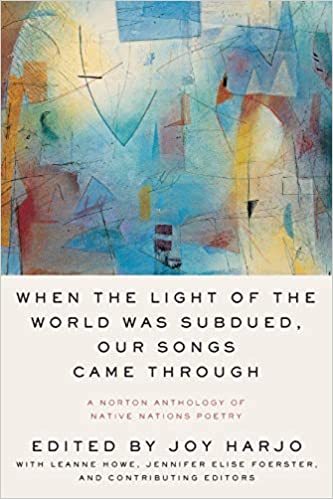
I’ve decided, I guess, to use my Tumblr as a virtual book club. Which is to say, there were two books I thought I might prefer to read as in a book club for accountability, but I didn’t have any takers in the places I mentioned it, so fuck it. I’ll just post thoughts I might’ve shared in such a book group here.
The first book is When the Light of the World was Subdued, Our Songs Came Through - Ed. Joy Harjo. I have long loved Harjo’s poetry and speaking, and I have also loved much of the Native Nations literature I’ve encountered over the years, so I was glad to order and pick this up from Annie Bloom’s Books here in Portland.
As an aside, the longer I’ve looked at this book, waiting to be read, the more the kerning before that comma has really upset me. I may have to “fix” my copy with paint or something. But I digress...
My plan with this kinda one-person book club: Start from the intro and read as much as makes sense. Mostly, read until I’m not really engaged with what I’m reading. For this part, I read the Introduction through to end of a poem on page 40, which is in the “Northeast and Midwest” part of the book, which is divided into five parts based on land. “We begin with the land” (Harjo 1).
Reading the intro, I’m brought back, somewhat, to grad school. Mostly as a reflection of how much more I know about how I learn, take in, and appreciate literature. And how going to grad school almost ruined that for me. That said, if I could go back, I’d start by working with...someone or some entity, saying, “This is how I learn and how I’ll be able to share with you what I’ve learned, but I will not be able to succeed if you insist on measuring my knowledge in this standardized way.” And maybe, we’d all decide I should just get a master’s and move along. Maybe we’d have all been smart enough to see that answer or to decide that there might be another way to know how the knowledge and I were working together.
Harjo highlights “nor did we store our memory in books and on papers,” and I recall the grad seminar discussion where I came to know that the purpose of writing was a replacement for memory. We have Plato and Socrates, for example, with memories to beat the band, because that is what there was--much like so much of Native literature. It is oral and performance and songs, and the legacy of storytelling between generations, and writing is only here for memory. Or like for me, to process my thoughts. But again, if I could remember each thought in order while thinking new thoughts, perhaps I could just process them in my brain--and retain the lessons I came to know. But I do not, and so I find writing best for processing thoughts.
The intro points out how many Native Nations writers identify the irony of writing in English. Sure, it became and is a shared language enabling trade, what with so many Native languages, but as the language of those that stole so much and would eliminate such a culture, at least early on, there is definitely irony. Harjo also writes “It is the nature of the divided world in which we live” (3), which strikes me as a defining point in things I appreciate. Grad school helped me appreciate critical thinking and holding contrary opinions together. When I finally decided to convert to Judaism, it was in part because of the teaching that learning (Torah or about life as a Jew) is a journey, and Judaism is about arriving at the journey--not arriving at a decision or an interpretation or an end. But arriving at a journey.
A number of themes and ideas are outlined in the intro, which will serve as good reminders when taking in the work within: land, in particular. But also the relationship to the receiver or participant in the poetry. The trickster, of course. The ancestors, of course.
In the intro the “Northeast and Midwest” part, Kimberley M. Blaeser reminds us especially of the early writers--and even more especially the early women writers, there is a clear translation at hand, as they try to convey cultural experience “into the English poetic forms and vernacular of the time” (13), and that’s so helpful to think about when reading the early works. In some cases, the translation is so full that one wonders if finding such things outside the context of a Native writer’s writing would allow one to identify it as such. I strived to find such indicators, but I acknowledge that...I could just be another white person trying to see whatever I consider “authentic Native” themes or wording. I could be full of shit. Well, surely I am. But I suppose if we acknowledge that context, it’s okay if I give it a go, as long as I don’t assume I’m right. Heck, Blaeser names a number of poets who “embody effects of manifest destiny, assimilation policies, and stereotypic misrepresentations” (14), so I’m not alone in looking for these things--and finding them even if they’re not there--I expect.
What I especially like in the early poetry in this “Northeast and Midwest” sections is the attempt at providing a full understanding: The various translations from long ago are presented with the literal translations we now have, and sometimes the authors’ own translations. And all that changes among them is really quite revealing.
This is already quite long, particularly with all the intro to my project, the book’s project, and the “Northeast and Midwest” part, so I won’t get into my marginalia with each of the works. At least not in this post. I will say that in this initial reading, “The Old Man’s Lazy” by Peter Blue Cloud (Aroniawenrate), a Mohawk, was my favorite. In part, because it’s more modern than the initial work in this section, and I prefer contemporary writing. But also, Blue Cloud’s use of indent! It’s powerful, I tell you. I also found a section that related to an event I just read about today--or that I could apply and see relevant themes.
In the poem, the speaker clearly has contradictory desires regarding being understood, and that itself--the contradiction--holds the poem together. I am trying to keep the largest theme, land, in mind as I read the pieces, and indeed, there is a theme of urban vs. rural and boundaries throughout. Also, how perspective weaves the story we tell--and that diversified view is captured in the poem. Oh, it’s just wonderful! “Each day / a different story is / told me by the fence [...] I tell my grandchildren / many of these stories, / perhaps / this too is one of them” (36). And I do love a good story about storytelling.
The last poem I read was Blue Cloud’s “Rattle,” and there’s so much happening in it that I think it’ll be a good one to start with when I resume the reading again.
1 note
·
View note
Note
Okay so every time people question individual lines of lyrics, all those BNFs in particular practically come at people's throats for merely asking a totally valid question. Look, I get it. I've been a Lit student. I get that you can't take everything literally bc often in poems esp, it's all a carefully constructed metaphor which you have to dig deep to understand. But in terms of lyrics, everyone is always prattling on about not taking it word for word, understanding it can refer to arguments
& just emphasising 'the whole picture' & DO NOT FOCUS ON THAT ONE LYRIC. But sometimes I am so lost, like with all those lyrics e.g. 'we were in love, now we're strangers' or 'Maybe one day you'll call me and tell me that you're sorry too', what other way are you supposed to read them if not literally? I just don't understand. This is not a question craving reassurance that they're not broken up or whatever. I have faith in them, and I'm not looking for that. But really, at the end of the day,
3. I truly do not blame people for thinking that. I know all those BNFs LOVE to have their superiority complex and snub anyone who has doubts or asks questions about hl's lyrics bc gosh they've been there since day 1 and are NEVER wary/cynical of their lyrics bc hl are perfect & it's impossible they broke up (as if we actually know them??), but I get it. I don't have an anxiety attack over lyrics like that, I don't think they are broken up, but I am mystified as I mull over them to my wits end.
4. Alright whoops so I may have gone off a tangent (unexpectedly so) but I hope someone can at least see where I'm coming from. There was supposed to be a question in there haha but I just rambled on a lot. Since I admire your flair for reading lyrics like literature and really capturing the nuances of their writing in your analyses, I wanted to know, how do you deal with lyrics like that? What thoughts do you have and how do you read them more metaphorically when it seems far too literal?
hahahaha UR TRYING TO GET ME IN TROUBLE WITH OTHER FANS I SEE U ANON kasdjfkjdak but thats okay. first of all i LOVE this rant let’s DISCUSS lyrics! I think there are two possible scenarios here, that we can explain in different ways, as long as we are in agreement that they at least fudged some parts of the truth. There was no two-year gap, just with the timeline, there was no uni, things like that. Those things have been shifted to fit with a narrative, and I get that - they’re storytellers! So, given that, I see two possibilities.
The first possibility is what I call Operation: Superman. By day, these guys are Superman, flying around, flashing their ability, being a rock star. By night, they’re mild mannered reporter Clark Kent who just wants to go on a date with their pretty coworker (I actually really love this metaphor lmao). This means that, just like Clark Kent (or Lois Lane I think she did most of the writing), the feelings behind the words they write are true (”Superman strives to be a symbol of hope, truth and justice”) while the actual words written (”Superman is an unidentified alien who likely is *insert massively untrue thing here* irl”). For these guys, that might mean that “We were in love, now we’re strangers” translates into “people used to see that we’re special to each other, and now they see us as strangers” (lmao @ the story that they wrote perfect in separate rooms), and “maybe one day you’ll call me, and tell me that you’re sorry, too” could translate into “we really got into it, and this feels like a delicate moment, and you SUCK at saying sorry, and I wish you would, because you were wrong, too”. Heartbreak comes in many different forms, and using one kind of grief to write about another is a tactic that I’ve used a lot in the past for my own healing process. So maybe that FEELING of being alone and lost and desperate for someone to reach out and see you is real, but the situation (i.e. ‘this is about a break up’) is made up. Goodness knows that much more has been made up for much less, and this way, no one knows who Superman really is.
The second possibility is that they broke up for a period of time. Looking at some of the more extensive archives, if i had to guess when, I would say that it was likely Feb 2016-Oct/Nov 2016? Because Louis has talked quite a bit about how when his mother took a turn for the worse, his partner was really there for him, and how it brought them closer, and the lessons it taught him about being a partner. Let’s be clear: “we were having a hard time and they stepped up and we became stronger because of it” does not have to mean “we were on a break” - it could totally mean ‘we were fighting a ton and had no clue what would be next and it wasn’t fun anymore’. But if we take it to be that they were on a break, then the lie isn’t ‘we broke up’ the lie is ‘i was broken up with someone for a few years’.
I can see the arguments for and against both of these possibilities, and idk which I’m more inclined to believe. Sometimes I’m like “they’re Superman!” and other times I think “eh, they probably did take a break in there somewhere”. So the way I look at the lyrics is as if the whole thing was a story, and I look at them in context of the larger story.:
The first step is “what is literally being said in this song”
The next one is “what is the theme of this song/the emotion driving it, and what does that say about the person writing it”
the third one is “where does this fit in the time it was written? who would have influenced the song? what was happening at the time?”
And from that, just like from any book, we can build an analysis. I *really* feel that answering those three questions can tell you what you need to know about how literal any given song is! We can even do a quick run through - let’s do ‘Miss You’:
The song is literally saying that they miss the person they’ve been with for a long time, and that they wish they could go back to what they used to be
The emotions driving the song are regret, loneliness, bitterness, and longing
They were massively pushing ‘ reformed (ish) party boy Louis’ at the time, and the song fits that narrative well. When the song was released (Dec 2017) , he’d just gotten back together with Eleanor (Feb [?] 2017)so it would have been a reflection of that time they spent apart, and how he felt when he was alone. Given that we know he’s not actually dating Eleanor, we can assume that they narrative and the things that push that might also tilt towards “not literally true”. The song was written by 7 people, and any number of people could have taken the emotions driving the song and come up with different lines, and Louis could have connected with those lines for different reasons, some of them being more literal, and some more emotional/metaphorical.
And then, taking all those components, you decide on what you think is the most likely read of that song. I can’t tell you what to think things are about, you know? No one can! I can only tell you what *I* think makes most sense when you put art in the context in which it was written, because nothing is ever created in a bubble.
#Anonymous#anon asks#i answer#whoa this got super long hahaha#sorry i really really can talk forever#come back and talk to me about things like this any time okay!!!#This was such a fun thing to talk about omg!!!
1 note
·
View note
Link
Something strange happened to the news over the past four years. The dominant stories all resembled the scripts of bad movies—sequels and reboots. The Kavanaugh hearings were a sequel to the Clarence Thomas hearings, and Russian collusion was rebooted as Ukrainian impeachment. Journalists are supposed to hunt for good scoops, but in January, as the coronavirus spread, they focused on the impeachment reality show instead of a real story.
It’s not just journalists. The so-called second golden era of television was a decade ago, and many of those shows relied on cliff-hangers and gratuitous nudity to hold audience attention. Across TV, movies, and novels it is increasingly difficult to find a compelling story that doesn’t rely on gimmicks. Even foundational stories like liberalism, equality, and meritocracy are failing; the resulting woke phenomenon is the greatest shark jump in history.
Storytelling is central to any civilization, so its sudden failure across society should set off alarm bells. Culture inevitably reflects the selection process that sorts people into the upper class, and today’s insipid stories suggest a profound failure of this sorting mechanism.
…
Culture is larger than pop culture, or even just art. It encompasses class, architecture, cuisine, education, manners, philosophy, politics, religion, and more. T. S. Eliot charted the vastness of this word in his Notes towards the Definition of Culture, and he warned that technocratic rule narrowed our view of culture. Eliot insisted that it’s impossible to easily define such a broad concept, yet smack in the middle of the book he slips in a succinct explanation: “Culture may even be described simply as that which makes life worth living.” This highlights why the increase in “deaths of despair” is such a strong condemnation of our dysfunction. In a fundamental way, our culture only exists to serve a certain class. Eliot predicted this when he critiqued elites selected through education: “Any educational system aiming at a complete adjustment between education and society will tend to restrict education to what will lead to success in the world, and to restrict success in the world to those persons who have been good pupils of the system.”
This professional managerial class has a distinct culture that often sets the tone for all of American culture. It may be possible to separate the professional managerial class from the ruling elite, or plutocracy, but there is no cultural distinction. Any commentary on an entire class will stumble in the way all generalizations stumble, yet this culture is most distinct at the highest tiers, and the fuzzy edges often emulate those on the top. At its broadest, these are college-educated, white-collar workers whose income comes from labor, who are huddled in America’s cities, and who rise to power through existing bureaucracies. Bureaucracies, whether corporate or government, are systems that reward specific traits, and so the culture of this class coalesces towards an archetype: the striving bureaucrat, whose values are defined by the skills needed to maneuver through a bureaucracy. And from the very beginning, the striving bureaucrat succeeds precisely by disregarding good storytelling.
…
Professionals today would never self-identify as bureaucrats. Product managers at Google might have sleeve tattoos or purple hair. They might describe themselves as “creators” or “creatives.” They might characterize their hobbies as entrepreneurial “side hustles.” But their actual day-in, day-out work involves the coordination of various teams and resources across a large organization based on established administrative procedures. That’s a bureaucrat. The entire professional culture is almost an attempt to invert the connotations and expectations of the word—which is what underlies this class’s tension with storytelling. Conformity is draped in the dead symbols of a prior generation’s counterculture.
…
When high school students read novels, they are asked to identify the theme, or moral, of a story. This teaches them to view texts through an instrumental lens. Novelist Robert Olen Butler wrote that we treat artists like idiot savants who “really want to say abstract, theoretical, philosophical things, but somehow they can’t quite make themselves do it.” The purpose of a story becomes the process of translating it into ideas or analysis. This is instrumental reading. F. Scott Fitzgerald spent years meticulously outlining and structuring numerous rewrites of The Great Gatsby, but every year high school students reduce the book to a bumper sticker on the American dream. A story is an experience in and of itself. When you abstract a message, you lose part of that experience. Analysis is not inherently bad; it’s just an ancillary mode that should not define the reader’s disposition.
Propaganda is ubiquitous because we’ve been taught to view it as the final purpose of art. Instrumental reading also causes people to assume overly abstract or obscure works are inherently profound. When the reader’s job is to decode meaning, then the storyteller is judged by the difficulty of that process. It’s a novel about a corn beef sandwich who sings the Book of Malachi. Ah yes, a profound critique of late capitalism. An artist! Overall, instrumental reading teaches striving students to disregard stories. Cut to the chase, and give us the message. Diversity is our strength? Got it. Throw the book out. This reductionist view perhaps makes it difficult for people to see how incoherent the higher education experience has become.
…
“Decadence” sounds incorrect since the word elicits extravagant and glamorous vices, while we have Lizzo—an obese antifertility priestess for affluent women. All our decadence becomes boring, cringe-inducing, and filled with HR-approved jargon. “For my Fulbright, I studied conflict resolution in nonmonogamous throuples.” Campus dynamics may partially explain this phenomenon. Camille Paglia has argued that many of the brightest left-wing thinkers in the 1960s fried their brains with too much LSD, and this created an opportunity for the rise of corporate academics who never participated in the ’60s but used its values to signal status. What if this dropout process repeats every generation?
…
The professional class tells a variety of genre stories about their jobs: TED Talker, “entrepreneur,” “innovator,” “doing well by doing good.” One of the most popular today is corporate feminism. This familiar story is about a young woman who lands a prestigious job in Manhattan, where she guns for the corner office while also fulfilling her trendy Sex and the City dreams. Her day-in, day-out life is blessed by the mothers and grandmothers who fought for equality—with the ghost of Susan B. Anthony lingering Mufasa-like over America’s cubicles. Yet, like other corporate genre stories, girl-boss feminism is a celebration of bureaucratic life, including its hierarchy. Isn’t that weird?
There are few positive literary representations of life in corporate America. The common story holds that bureaucratic life is soul-crushing. At its worst, this indulges in a pedestrian Romanticism where reality is measured against a daydream, and, as Irving Babbitt warned, “in comparison . . . actual life seems a hard and cramping routine.” Drudgery is constitutive of the human condition. Yet even while admitting that toil is inescapable, it is still obvious that most white-collar work today is particularly bleak and meaningless. Office life increasingly resembles a mental factory line. The podcast is just talk radio for white-collar workers, and its popularity is evidence of how mind-numbing work has become for most.
Forty years ago, Christopher Lasch wrote that “modern industry condemns people to jobs that insult their intelligence,” and today employers rub this insult in workers’ faces with a hideously infantilizing work culture that turns the office into a permanent kindergarten classroom. Blue-chip companies reward their employees with balloons, stuffed animals, and gold stars, and an exposé detailing the stringent communication rules of the luxury brand Away Luggage revealed how many start-ups are just “live, laugh, love” sweatshops. This humiliating culture dominates America’s companies because few engage in truly productive or necessary work. Professional genre fiction, such as corporate feminism, is thus often told as a way to cope with the underwhelming reality of working a job that doesn’t contribute anything to the world.
There is another way to tell the story of the young career woman, however. Her commute includes inspiring podcasts about Ugandan entrepreneurs, but also a subway stranger breathing an egg sandwich into her face. Her job title is “Senior Analyst—Global Trends,” but her job is just copying and pasting between spreadsheets for ten hours. Despite all the “doing well by doing good” seminars, the closest thing she knows to a community is spin class, where a hundred similar women, and one intense man in sports goggles, listen to a spaz scream Hallmark card affirmations.
…
The bureaucrat even describes the process of rising through fraudulence as “playing the game.” The book The Organization Man criticized professionals in the 1950s for confusing their own interests with those of their employers, imagining, for example, that moving across the country was good for them simply because they were transferred. “Playing the game” is almost like an overlay on top of this attitude. The idea is that personal ambition puts the bureaucrat in charge. Bureaucrats always feel that they are “in on the game,” and so develop a false sense of certainty about the world, which sorts them into two groups: the cynics and the neurotics. Cynics recognize the nonsense, but think it’s necessary for power. The neurotics, by contrast, are earnest go-getters who confuse the nonsense with actual work. They begin to feel like they’re the only ones faking it and become so insecure they have to binge-watch TED Talks on “imposter syndrome.”
These two dispositions help explain why journalists focus on things like impeachment rather than medical supply chains. One group cynically condescends to American intelligence, while neurotics shriek about the “norms of our democracy.” Both are undergirded by a false certainty about what’s possible. Professional elites vastly overestimate their own intelligence in comparison with the average American, and today there is nothing so common as being an elitist. Meanwhile, public discourse gets dumber and dumber as elitists spend all their time explaining hastily memorized Wikipedia entries to those they deem rubes.
…
The entire phenomenon of the nonconformist bureaucrat can be seen as genre inversion. Everyone today grew up with pop culture stories about evil corporations and corporate America’s soul-sucking culture, and so the “creatives” have fashioned a self-image defined against this genre. These stories have been internalized and inverted by corporate America itself, so now corporate America has mandatory fun events and mandatory displays of creativity.
In other words, past countercultures have been absorbed into corporate America’s conception of itself. David Solomon isn’t your father’s stuffy investment banker. He’s a DJ! And Goldman Sachs isn’t like the stuffy corporations you heard about growing up. They fly a transgender flag outside their headquarters, list sex-change transitions as a benefit on their career site, and refuse to underwrite an IPO if the company is run by white men. This isn’t just posturing. Wokeness is a cult of power that maintains its authority by pretending it’s perpetually marching against authority. As long it does so, its sectaries can avoid acknowledging how they strengthen managerial America’s stranglehold on life by empowering administrators to enforce ever-expanding bureaucratic technicalities.
…
Moreover, it is shocking that no one in the 2020 campaign seems to have reacted to the dramatic change that happened in 2016. Good storytellers are attuned to audience sophistication, and must understand when audiences have grown past their techniques. Everyone has seen hundreds of movies, and read hundreds of books, and so we intuitively understand the shape of a good story. Once audiences can recognize a storytelling technique as a technique, it ceases to function because it draws attention to the artifice. This creates distance between the intended emotion and the audience reaction. For instance, a romantic comedy follows a couple as they fall in love and come together, and so the act two low point will often see the couple breaking up over miscommunication. Audiences recognize this as a technique, and so, even though miscommunication often causes fights, it seems fake.
Similarly, today’s voters are sophisticated enough to recognize the standard political techniques, and so their reactions are no longer easily predictable. Voters intuitively recognize that candidate “debates” are just media events, and prewritten zingers do not help politicians when everyone recognizes them as prewritten. The literary critic Wayne Booth wrote that “the hack is, by definition, the man who asks for responses he cannot himself respect,” and our politicians are always asking us to buy into nonsense that they couldn’t possibly believe. Inane political tropes operate just like inane business jargon and continue because everyone thinks they’re on the inside, and this blinds them to obvious developments in how audiences of voters relate to political tropes. Trump often plays in this neglected space.
The artistic development of the sitcom can be seen as the process of incorporating its own artifice into the story. There is a direct creative lineage from The Dick Van Dyke Show, a sitcom about television comedy writers, to The Office, a show about office workers being filmed for television. Similarly, Trump often succeeds because he incorporates the artifice of political tropes. When Trump points out that the debate audiences are all donors, or that Nancy Pelosi doesn’t actually pray for him, he’s just pointing out what everyone already knows. This makes it difficult for other politicians to “play the game,” because their standard tropes reinforce Trump’s message. If the debates are just media spectacle events for donors, then applause lines work against you. It’s similar to breaking the fourth wall, while the rest of the cast nervously tries to continue with their lines. Trump’s success is evidence that the television era of political theater is ending, because its storytelling formats are dead.
In fact, the (often legitimate) criticism that Trump does not act “presidential” is the same as saying that he’s not acting professional—that he is ignoring the rules of bureaucratic advancement. Could you imagine Trump’s year-end review? “In 2020, we invite Donald to stop sending Outlook reminders that just say ‘get schlonged.’” Trump’s antics are indicative of his different route to power. Forget everything else about him: how would you act if you never had a job outside a company with your name on the building? The world of the professional managerial class doesn’t contain many characters, and so they associate eccentricity with bohemianism or ineptitude. But it’s also reliably found somewhere else.
Small business owners are often loons, wackos, and general nutjobs. Unlike the professional class, their personalities vary because their job isn’t dependent on how others view them. Even when they’re wealthy or successful, they often don’t act “professional.” It requires tremendous grit and courage to own a business. They are perhaps the only people today who embody what Pericles meant when he said that the “secret to freedom is courage.” In the wake of coronavirus, small businesses owners stoically shuttered their stores and faced financial ruin, while politicians with camera-ready personas and ratlike souls tried to increase seasonal worker visas.
…
Ever since Star Wars, screenwriters have used Joseph Campbell’s monomyth to measure a successful story, and an essential act one feature is the refusal of adventure. For a moment, the universe opens up and shows the hero an unknown world of possibility, but the hero backs away. For four years, our nation has refused adventure, yet fate cannot be ignored. The coronavirus forces our nation to confront adventure. With eerie precision, this global plague tore down the false stories that veiled our true situation. The experts are incompetent. The institutions told us we were racist for caring about the virus, and then called for arresting paddleboarders in the middle of the ocean. Our business regulations make it difficult to create face masks in a crisis, while rewarding those who outsource the manufacturing of lifesaving drugs to our rival. The new civic religion of wokeness is a dangerous antihuman cult that distorts priorities. Even our Hollywood stars turn out to be ugly without makeup.
5 notes
·
View notes
Photo

I’ve also decided to finish this decade with something more light-hearted, detailing the many trends that one can associate with the past ten years. I styled this picture in a similar fashion to those gaudy collages you have relating to the 1980s and 1990s, with this mainly being reflected in the style of this picture. The title of the picture holds a very minimalist design, and is shown from inside a phone, whilst the rest of the poster has a dull white background. These main design choices were added to reflect the omnipresence of smartphones in this decade, as well as the general trend of Minimalism, which has been followed by many companies in recent years. The decision to make the background seem plain was not completely because I’m feeling lazy, but because I tried to follow the trend of minimalism, a trend I personally hate because of how boring it is (I probably would have added in a pretty pattern if there was some other major design trend).
Beyond this though, there are a few other things I chose to add in to reflect the 2010s:
-Ragecomics- The basis of most early-2010s memes.
-Skrillex (or rather Dubstep in general)- A key figure in a genre of music that you either loved or hated.
-Obama- A fantastic President who laid the groundwork for change that will hopefully be built upon in the future.
-Hipster culture- Fresh-out-of-college rich kids who made avoiding the mainstream a mainstream trend.
-The Occupy Movement (“We are the 99%” sign)- A promising post-Great Recession movement with disappointing results.
Gay Rights- Gay marriage is now legal in places like the United States, and homosexuality is more accepted the western world, so much so that companies are now no-longer afraid to pander to them whenever June comes around. Still, other parts of the planet have yet to change their outdated ways.
Trans rights- With people like Caitlyn Jenner and Leelah Alcorn, Transgenderism has arrived into the forefront of social issues, though it remains a strongly divisive issue throughout the decade.
Drones- Like helicopters but smaller and cheaper.
Overwatch- An interesting game that offered a unique personality to the shooter genre in a decade oversaturated with annual Call of Duty releases.
Cuphead- A challenging run-and-gun platformer with a Golden-Age animation-style, showcasing what can be made through video games these days.
Minecraft- The game that doesn’t die. It defined the childhoods of many gamers who fondly remember the early-2010s, and has since made a major resurgence in the decade’s end.
Steven Universe- A much-loved show that offered many unique and progressive themes, which I can admire despite my mixed feeling for the show itself.
Gravity Falls- A show aimed at children didn’t have to be this immersive and interesting, but Alex Hirsch and his team did it anyway and offered the world two seasons of hilarious and yet gripping television.
Political correctness/Woke-ness (“That’s Offensive” speech bubble)- Something that has been pushed to death among the political mainstream, but especially by the Left, as people are silenced whilst others demand safe spaces to keep their precious feelings from being hurt. Political correctness is a somewhat-trend that is better off staying in this decade.
Shrek- Whilst the 2010s have been starved of a new Shrek film besides the contested “Shrek Forever After”, the “Shrek is Love, Shrek is Life” greentext story, despite its crude subject matter, has made the brutish but kind ogre a mainstay in meme culture, whilst offering people the opportunity to explore the nuances of the franchise, after growing up with the character.
Pewdiepie- Starting out strong in the decade, making a name for himself as “that funny Swedish guy who screams as scary games”, an incident in February 2017, in which he was called a Nazi by the mainstream media, resulted in him becoming a more independent and politically incorrect figure, before going on to unite the internet in a battle for the most subscribed YouTube channel against a corporation. He lost in the end, but it was fun while it lasted.
Tyler, the Creator- Offering a unique sound among waves of forgettable Pop music, Tyler evolved from an edgy but somewhat humorous rapper, to an interesting and poignant singer in this past decade, achieving near-mainstream success.
Marvel Cinematic Universe (Endgame logo)- Many mainstream cinemagoers are bound to have seen at least one of these groundbreaking movies in cinemas, with their intense action and perfectly balanced humour, all culminating in the outstanding films “Avengers: Infinity War” and “Avengers: Endgame”.
Death Grips- Unlike anything that has ever been popular among general audiences, the exciting tunes concocted by MC Ride and Zach Hill have remained in the minds of many younger and more alternative individuals.
My Little Pony: Friendship is Magic- Arguably the most unlikely of fanbases to come around in this decade, this re-imagining of an 80s cartoon series had a style of humour and storytelling that peaked the interests of a group of adult men known as “Bronies”, who’s reasons for being interested were questioned and much of the internet hated them, but they were certainly something to behold throughout these years.
The 2016 Presidential Election (Hilary Clinton and Donald Trump)- A time many can regard as the branching-off point between the first and second halves of the decade, as the extremes of both sides were exposed to the world with astonishing results.
Vine- A social media platform that has since disappeared off the face of the Earth, but brought about many notable celebrities and memes that are often remembered by younger generations.
Vaporwave- Alongside Hipsters, Vaporwave was perhaps one of the few examples of a concrete “counter-culture” movement, offering an anti-Capitalist message within its use of music and iconography from the 1980s and 1990s. Since then, it is best known for offering a warm and interesting “aesthetic”.
Pepe the Frog- A frog best known for saying “Feels Good Man” earlier on, was later used by certain Right-wingers and has since been touted as a symbol of hat. But, with a smug grin like that, it appears that he doesn’t seem to care about what others say.
Social media- It already played a massive role from the mid-2000s-onwards, but now, the scale of social media has grown exponentially, with people moving away from mainstream news and entertainment and instead choosing to get their kicks on Facebook, Instagram, Twitter and YouTube. This focus on gaining the news from social media has held some negative consequences as fake news continues to fool gullible Boomers.
Hyperbeast fashion- In terms of fashion, the Hypebeast is the late-2010s’ version of the Hipster, though unlike Hipsters, who are financially-independent rich kids who make questionable purchasing decisions, Hypebeasts are often preteen/teenagers who suck money out of the credit cards of their rich parents.
Adventure Time- A rather interesting cartoon that started off as a fun show to get high to, but evolved into a gripping epic with an expansive lore and interesting world.
Minions- While they were rather annoying to older viewers following their introduction in the otherwise top-tier film Despicable Me, children and especially 40-something year-old Facebook Mums couldn’t get enough of these wacky tic-tacs.
Brexit- A subject that I, as a Brit, couldn’t seem to get away from in the past few years, as politicians refused to move forward with the people’s decision. But, with the Tory majority in Parliament, as depressing as that sounds, it seems possible that we can finally move on as a country to more important matters.
Vaping (Juul-smoking mouth)- Recovered chain-smokers and rebellious teens have made this trend a popular pastime, though its popularity has waned recently over health concerns.
Doge- Whilst it began as a singular image of a cartoonish-looking Shiba Inu making a weird face, as brightly-coloured Comic Sans surrounds her, this dog has become the subject of many surreal and unique memes, taking on many different forms, solidifying the transformative nature that all memes should strive for.
Hoverboards, Fortnite, Dabbing, and Fidget Spinners (The monstrosity on the bottom-right)- What do a handle-less Segway, a more cartoony (but somewhat better) version of PUBG, a dance based off of post drug-taking sneezes and small bits of metal for Autistic children have in common? They have all ascended to levels of annoying trends that at least some people have had fun with.
Undertale (Sans)- An interesting game that has gained a heavy degree of fame for its interesting themes and interesting characters, some of which have been admired a bit too much by certain teenage girls.
As for my personal experiences of this decade, I can say that, whilst I was born in the early-2000s, I was definitely raised in the 2010s. Much of my memories of the previous decade are rather minimal, and I didn’t follow that many trends considering I only lived on constant repeats of SpongeBob by the start of this decade. Since then, though I have gained many impactful memories from these past few years. Some good, some bad, some great, all of which were a part of growing up. In about two-weeks’ time, I will finally become a legal adult, and shall begin the rest of my life. So, I wish you all well, and hope your Twenties are truly roaring!
19 notes
·
View notes
Text
My 25 favourite albums of the 2010′s
When it came down to making a list of my favourite projects through the 2010's, it really became clear to me how difficult of a task this was - I've listened to hundreds and hundreds of albums, EP's and Mixtapes during this time frame with artists from different genres, during different times of my life, where I needed different types of music to soothe my soul. When I started writing down the albums I want to put in my decade list, the first thing I set as a rule to myself was that I'd have only one album per artist, just to avoid repetitiveness and so I can actually think about which artists really did leave a mark on me during this time frame and not just have a list of 10 artists with my favourite 2-3 albums from each. Even then, I originally had more than 35 albums written down as standouts for me during this time and I wanted to originally make a top 20 - I quickly realized that wouldn't be possible, but a top 35 or top 30 would be way too big, so I decided to settle on a top 25 and even then I realized I'd leave out some generational artists like Gambino, JID, 6LACK and more. After that I just decided I wouldn't rank them, it would just be 25 albums that were my favourite during the decade - no rankings, because really, how can I compare a hip-hop album to an Indie album for instance? I couldn't. I hope this list raises a discussion and we can talk about your favourite albums during this period as well or you can tell me I'm braindead for leaving out someone from the list. So in no particular order, I'll list the albums and leave some thoughts on each:

A$AP Rocky - AT.LONG.LAST.A$AP (2015)
Althogh this album was released in 2015, it took me till about two years later to really appreciate it as a project - it was my coming of age album, where I realized that I need to love myself and focus on my own well-being, to have that self-confidence that reflects the reality of who you are as a person and that attracts others to be interested in what's going on with you. The album was and still is very relevant to the environment I didn't want to be in and to push myself to achieve what I've been dreaming of, as well as reflect on the existential topics I've always raised within myself regarding love, violence and pain.

Car Seat Headrest - Twin Fantasy (2018)
I was a bit late to the party with this one, as I only started listening to it in 2019, a year after its release, but I have to admit, Twin Fantasy really reflects all of the impulsive emotions I have within myself regarding loneliness, being insecure and counting on the people you love so that you help each other out, outgrowing your childish opinions and understanding of relationships and realizing your partner struggles just as much as you do. This might be my favourite indie-rock project right now.

Chance the Rapper - Acid Rap (2013)
This album was a big part of me during my teenage years - I remember it reflecting the issues I was facing when I was 16-18 and it really made me vibe with it, due to the appreciation I had for my friends and my free time during that time, at the same time addressing the inner feelings of whether you're doing the right thing with your life. Listening to it now, years later gives me an alternative view of it as well, as an adult who looks with nostalgia at his younger self and realizes how much emotions I've missed from this project.

Freddie Gibbs & Madlib - Pinata (2014)
Arguably the album with the best production of all time - the free-flowing jazzy and soulful beats from Madlib, underlined with Gibbs's absurd flow, the story-telling of him having to sell drugs and rob people to make a living, the absurd amount of genius features and the disgusting verses Gibbs had on songs like Harold's, Real and Robes just puts this project in a bracket of its own - I was wondering whether I prefer Pinata or Bandana, but as Bandana is a very fresh project still, this one has aged like a fine wine for me.
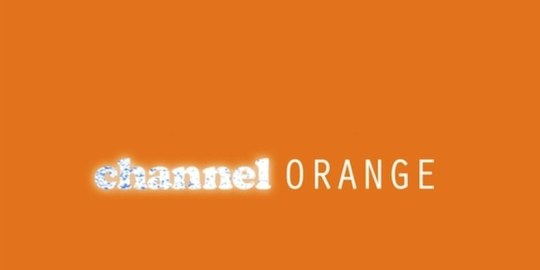
Frank Ocean - channel ORANGE (2012)
Oddly enough, I'm one of those people who doesn't like Blonde as much as channel ORANGE. This album really hit home when it came down to my break-ups and realization I'd have to start all over again, both with myself and with someone else in the future - it really made me miss some people in my life time and time again and has brought me to tears more than you'd think. Frank's commentary on the album on different aspects of love and society really puts you in a frame of mind where you'll relate to almost everything he's experienced.
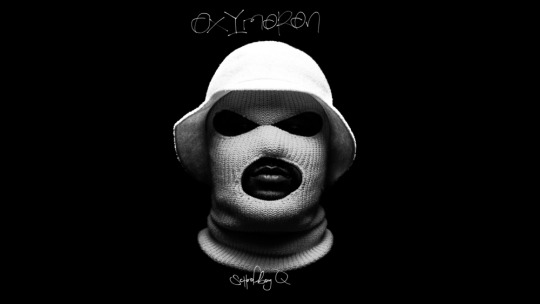
Schoolboy Q - Oxymoron (2014)
This was the best story-telling album of the decade for me. The production which had a very modern take on old-school Gangsta rap really sticks to you with every song, the themes which Q explores with growing up in his ghetto neighbourhood, being part of the Crips, selling drugs and being part of gang-related crime really hits hard, combined with the realization he wants something better from life after growing up in poverty. Looking at Q grow up as a person after the release of this album and achieving all of his dreams really adds to this project as a modern day classic.

Flying Lotus - You're Dead (2014)
Honestly, this one isn't for everyone - when making this list FlyLo had completely slipped my mind, even though I absolutely destroyed Flamagra with replays this year and had destroyed You're Dead in 2018 and 2017 due to the amazing production and vibe the album had. This project has an absolutely one of a kind take on combining modern jazz with psychedelic beats and hip-hop features, showcasing exactly why Flying Lotus is one of the best producers of modern times.
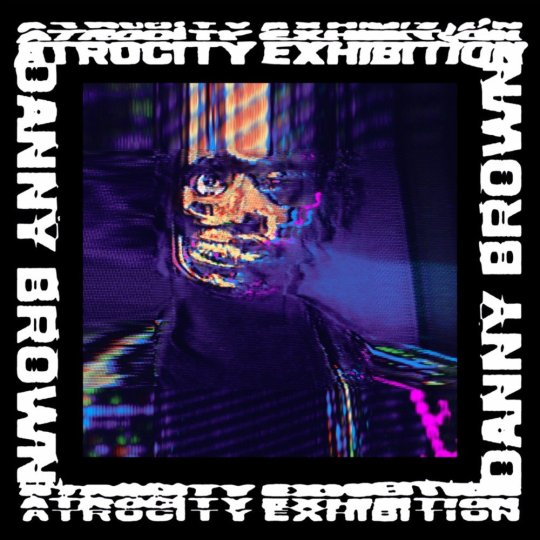
Danny Brown - Atrocity Excibition (2016)
The culmination of Danny Brown's career for me, Danny addresses what it's like to completely hit rock bottom in this project, being a crackhead, who'd party, have sex with groupies and strangers and have no control over his life - there's a very neurotic and dark production on this album, combined with Danny's hilarious, but unsettling one-liners and verses which really could have been interpreted as a cry for helf, especially on songs such as "Ain't it Funny".`

Anderson. Paak - Malibu (2016)
I recently wrote about Paak in a blogpost, discussing how he brought soul music back into the mainstream through a fantastic combination of rapping and singing with soul-inspired production and keeping a very funky vibe alive. This album was his best work for me and really showcased how much he's loving life, living to his best and enjoying every day of it, whilst at the same time addressing how difficult, but worth it love can be.
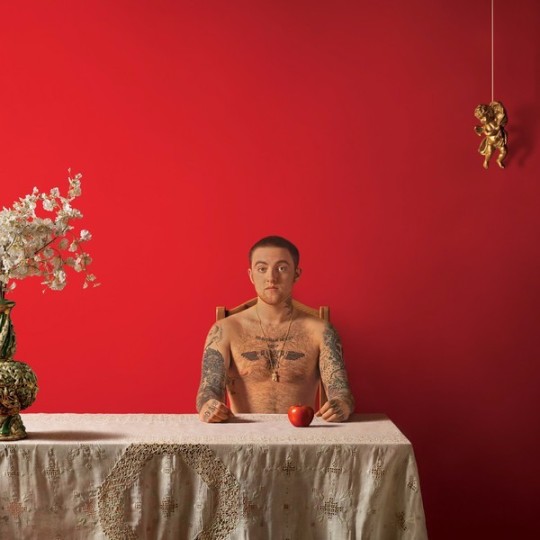
Mac Miller - Watching Movies With The Sound Off (2012)
Mac was one of the first artists I wrote about, as I basically grew up with him, although he was a bit older than me (he's 92 and I'm 97). Every album of his was a part of my life and something I could relate to and live through, sometimes a bit later than its release, but no album has had such an eternal feel to it as Watching Movies. Both at 19 and at 22, I could find life lessons in this album and songs that could really describe what I'm going through, both on the end where my ego is taking over and I don't feel in control (Red Dot Music), to the downpoints of my life and addictions (Objects in the Mirror).
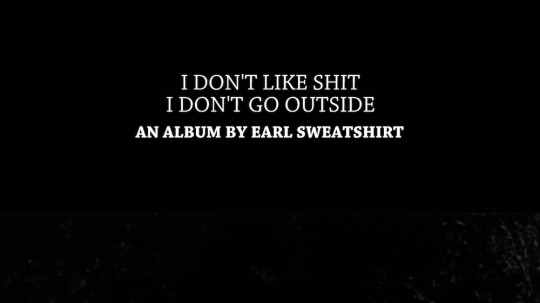
Earl Sweatshirt - I Don't Like Shit, I Don't Go Outside (2015)
I love Earl. Realistically, I couldn't keep him out of this list, although none of his albums really are crazy standouts, as he has an extremely consistent body of work, but I decided to settle with this one. With its melancholic production, dark and slow beats and topics of depression, suicide and self-isolation, this album has been one of my main therapists every time life has absolutely killed me and had kept me afloat, thanks to having someone to relate to in those difficult, dark edgy times.
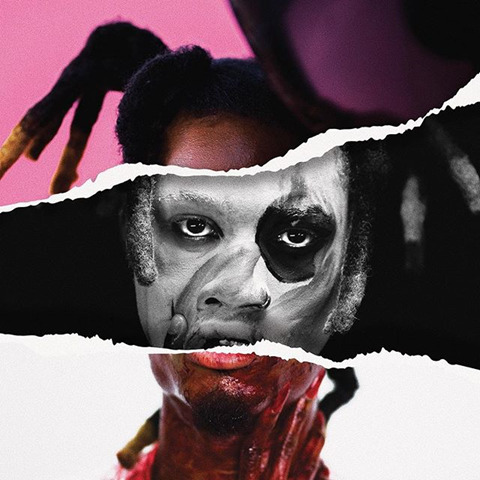
Denzel Curry - TA13OO (2018)
Probably one of most inovative albums in the end of the 2010's, Denzel split the album up into three parts, all reflecting the emotions he felt during the proccess of creating it: Light, embracing his success and feelings of positivity; Grey, being introspective about his life and looking at the people trying to use him and hate him objectively; Dark, channeling all his anger and darkest emotions.
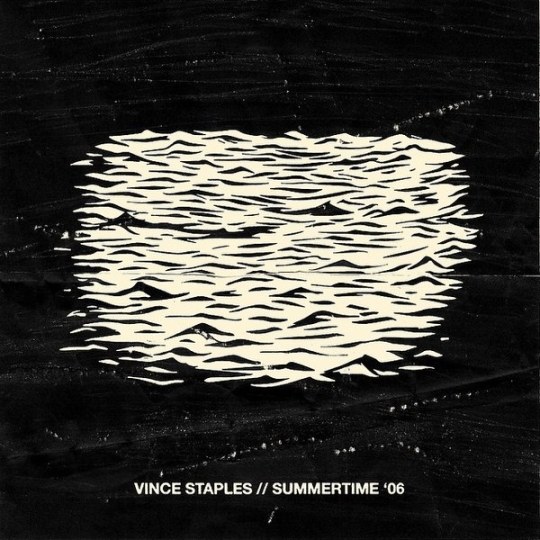
Vince Staples - Summertime '06 (2015)
Vince really is one of the most complex artists of modern times for me personally, as his music is always very difficult to gauge and he always strives for innovation, rather than mainstream appeal. Summertime in reality is probably his most mainstream album, being an excellent storytelling project of his origins from Long Beach, California, the gang culture and harsh reality around him, his friends being shot down or turning into coke fiends and the way his environment has shaped him as a person of distrust and scepticism.

Sons of Kemet - Your Queen's a Reptile (2018)
I really wanted to have a jazz project in this list and I was torn between this one, Everything's Beatiful and Drunk, but I always go back to this one the most. The avant-garde jazz-funk sound of this album, combined with traditionally african melodies and beats and progression each song goes through really makes this a multi-layered album which you will need to listen to again and again, as it also had a very political message in itself.

Kendrick Lamar - To Pimp a Butterfly (2015)
If anyone asks me what's the greatest pure hip-hop album of all time, I always answer and have answered "To Pimp a Butterfly". This album was and in my opinion still is very much before its time - the jazz-rap production, social and political messages and discussion, the absurd beats and flows, the rhyme-schemes, everything about this album absolutely shines and whatever I say, will not do it justice, you need to listen to this start to back.
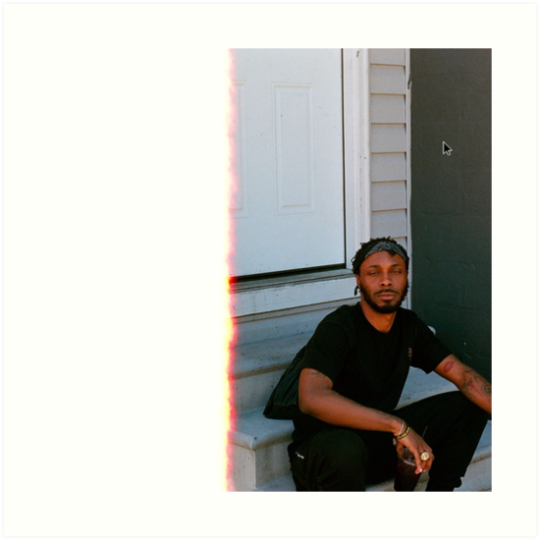
Jpegmafia - Veteran (2018)
Being one of the most experimental and non-fuck giving rappers in the game right now, this album was really a step in the right direction for hip-hop, as it had production that you'd probably hear nowhere else, DYI samples, political comments and messages in a very unfiltered manner, showcasing Peggy's no-fucks-given attitude to everything in music, something he has continued to prove to this day.

Tame Impala - Currents (2015)
I originally listened to this project for the first time in late 2016, but I really wasn't too much into Indie back then, so I gave it little thought. 3 years later, after listening to it again I realized what a genius piece of art Kevin Parker had created with its topics of self-discovery, introspection on life and it's psychedelic indie-rock production, really creating something that no one else had heard before.

Joey Bada$$ - 1999 (2012)
What really makes me not believe this project exists is that Joey released it when he was 17. Having some of the best old-school inspired production and beats, with a jazzy, soulful sound, this album showcases a very young man challenge the political climate of its time, as well as have very matures takes and opinions on gang-culture, smoking weed and needing to grow up, realizing he can't live a life of parties and drugs if he wants to leave something that's worth it in the world.
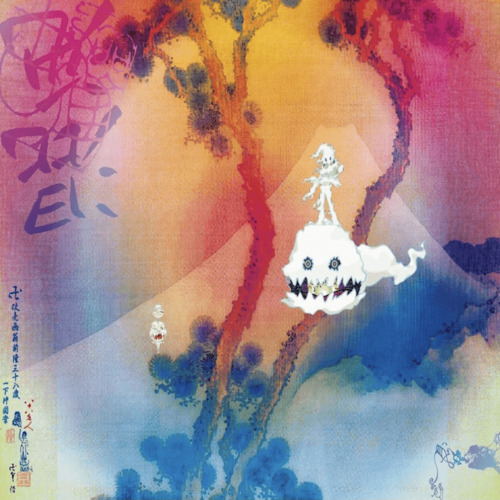
Kanye West and Kid Cudi - Kids See Ghosts (2018)
I was really wondering if I should put this album in my list, as I'm not the biggest Kanye fan and I haven't really liked much of Cudi's work past 2010, but in the end, this album is one of a kind. It tells the tale of two people struggling with their mental illnesses, but in the end conquering them, loving themselves and realizing that they have so much to give in life. The album shares a very heavy inspiration from Tame Impala's production as it has a fantastic psychedelic rock production, combined with samples and yells from Cudi and Kanye which you'd never hear in another project, which people take seriously.

Death Grips - No Love Deep Web (2012)
Disgusting. Raw. Overpowering. Back in 2012 when this project was released, Death Grips completely took the internet by storm, as nothing like this had ever been released even in the underground hip-hop scene. Glitchy production, combined with guitar riffs, sudden breaks, yelling and completely unrelated gibberish in most of the songs, topped off with an album cover of Zach Hill's dick, this album inspired a decade of experimentation in rap music, leading to albums such as Kanye's Yeezy and Tyler's Cherry Bomb.

Ab-Soul - Control System (2012)
Lyrically one of the most complex projects I've ever heard, Ab-soul's rhyme schemes and punchlines deserve a place in a literature course in University, as you'd need multiple listens on his songs to catch every little reference the rapper makes. The album has a fantastic jazz-inspired production, songs with a very disjointed beat, showcasing his emotional instability during making it, as he references his past and the personal issues he had to go through during life, the suicide of his beloved Alori Joh, which has caused him to contemplate suicide himself and the references to his co-stars in TDE's projects makes for a project you'll spend hours on end to try and figure out.

The Internet - Ego Death (2015)
One of the best contemporary R&B projects, the Internet combines a very blues and soul inspired production for this one, giving face to their fantastic members ability to create a vibe and atmosphere in their music - the most impressive part for me with them is that this album really was the start of multiple fantastic artists solo careers: Syd, Steve Lacy, Matt Martians.
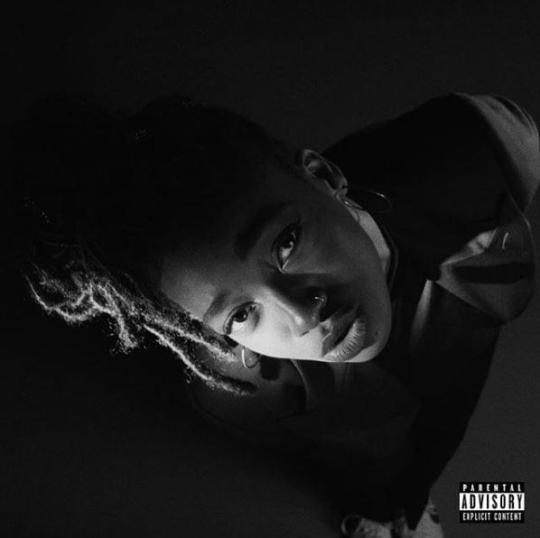
Little Simz - GREY Area (2019)
This and Tame Impala were my only projects by non-american artists and for a reason. Little Simz crafted a fantastic hip-hop album filled with a mixture of aggressive, eerie production and classical jazz and blues samples, showcasing her talent to both sing and rap in every single song, exploring the difficulties of being a female MC in the modern era, the pressure and negative emotions she experiences having to work much harder in the industry than men and the pain she's felt during the years of her coming of age.
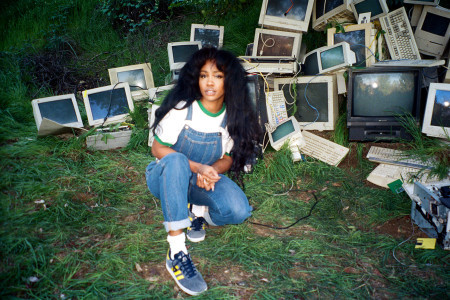
SZA - Ctrl (2017)
My favourite R&B album of the past decade, SZA created one of the rawest, most emotional albums I've ever heard, reflecting on modern romance from a very personal and subjective point of view, gives this project a very aunthetic and deep feel you'd have to dig deep to find elsewhere. The album also underlines SZA's struggles as a modern woman, jealousy and the anxiety of being in your 20's. The project's classic R&B production combined with its features from artists like Travis Scott and Kendrick Lamar, really adds to an experience which could leave you heartbroken.

Isaiah Rashad - Cilvia Demo (2014)
Although during the past year The Sun's Tirade has been my favourite and main album, it really is more of a vibe album and not as much as a personal abum as Cilvia. In Cilvia I found myself, Isaiah talks about his addiction issues, wanting to make it in a world full of hate, the horrible relationship with his father, thoughts of suicide, the lack of commitment he has in love and has received in his relationships and the social climate which makes him feel like he's less of a person. This isn't an album for everyone, but the people who can relate to what he's feeling will likely fall in love with this project.
#albums#list#favourite#decade#2010s#2010#rap#indie rock#RnB#Jazz#Isaiah Rashad#SZA#Chance the Rapper#Little Simz#Cilvia Demo#Ctrl#Acid Rap#Grey Area#The Internet#Ego Death#Ab-Soul#Control System#Death Grips#No Love Deep Web#Kids See Ghosts#Kanye West#Joey Badass#1999#Tame Impala#Currents
5 notes
·
View notes
Text
Begin Again
Unitarian Universalists can learn from our Jewish neighbors about starting the new year with a fresh perspective. This sermon was delivered to the UU Church of Silver Spring, MD, on September 29, 2019.
Our administrative office is a place of wonder, discovery, and spiritual growth. Really. The other day, our beloved and highly valued congregational Treasurer, Olivia, was opening the mail. She wondered out loud if anyone wanted to respond to our insurance company about their offer for a free wall calendar that includes safety tips for religious communities and contact information for the insurance company. I was so excited! This was just the letter I had been waiting to receive!
If you’ve been in my office, you’ve seen how marked up last year’s calendar is. Not only do I write on it the dates of special services and congregational events, it’s the first place I look when I’m so immersed in planning ahead that I need to be reminded what day it is today. Olivia very kindly wrote our customer number down for me so that I could go on the website to request our copy of the calendar. It’s supposed to arrive in November. I can’t wait!
There is nothing like spreading out a fresh calendar, full of open spaces, the potential energy of days and weeks and months stretching before you. Anything is possible. There is value in spontaneity, and I admire people who can create things in the moment, but the gifts that the Divine has bestowed upon me work best when I plan ahead. I can adapt a plan when needed -- I’d like to think I can be flexible -- but I prefer to start with at least some goals. Hence, the golden opportunity of a new calendar: an entire year, waiting to be framed with hopes and dreams!
Of course, knowing that not everything goes according to plan, the safety tips and phone numbers for the insurance company are nice to have, too.
My excitement about turning over a new page in the calendar is just one of the reasons I find it deeply meaningful to celebrate Rosh Hashana, the Jewish New Year. My interfaith family is delightfully complex in spiritual expression, so I hope it’s not too confusing that I spoke about my personal earth-centered practice last week, and this week I’m telling you that I’ll be out of the office for Rosh Hashana and Yom Kippur. Some of the families in this congregation are interfaith Jewish and UU like mine, but even for those who are not, there is wisdom we can learn from the Jewish New Year that fits in with Unitarian Universalist faith and practice.
In particular, I want to talk about starting over. For ourselves, that means coming to terms with our mistakes and vulnerabilities, and setting intentions for the kind of people we want to be and the kind of choices we want to make in the coming year. In our relationships together, that might mean making amends or letting go of grudges so that we can start fresh. Turning the page doesn’t mean forgetting the chapters that came before, but it can mean a new perspective and a new direction. In our Soul Matters themes of the month, September is a month of expectation; this week is a good time to begin again, to reset our expectations of ourselves and the year ahead.
A bit of context might help. On the Jewish calendar, Rosh Hashana is the new year holiday. The shofar is blown to wake us up, to bring us into the present moment where we can do the work of turning toward life in the new year. Ten days later, Yom Kippur is the Day of Atonement, the last day before the books are closed on the previous year, a last push to take responsibility for our mistakes. I’ll talk about that next week. There is space between them to look back, like when the congregation ends our year of accounting on June 30 but we have a little time before we can give a comprehensive financial report on the year that has just ended. We need that time in between to assess and to make corrections. While Rosh Hashana and Yom Kippur are two separate holidays, and it’s a great opportunity to be able to talk about them separately, they are related to each other.
As Unitarian Universalists, we strive to practice responsibility. Our UU Principles speak of the free and responsible search for truth and meaning. Our behavior should reflect the inherent worth and dignity of all those who are affected by our actions, including ourselves. We know that we are part of an interdependent web of existence, and that our choices have far-reaching consequences on others, and that the choices of others far away have an impact on us. Whether we reflect on this at Rosh Hashana or at another time of year, it makes sense to take regular stock of how we are doing with being in community. It makes sense to lower our defenses long enough to honestly assess the places where we can do better, to repair our relationships where we have done harm, and to set some intentions for living out our values more deeply than we have before. This can include setting intentions that will allow us to have greater access to joy, to community, and to spiritual growth; turning toward life in the new year has hopeful and positive aspects.
Last week, we talked about your congregational covenant of right relations, including the part that says:
Knowing we will at times fall short of these ideals, we intend to use this covenant as our guide for the behavior we expect of ourselves and others as we live and work in community.
This understanding of human fallibility is built into the High Holidays, and is definitely built into a long-lasting UU covenant. None of us are perfect, yet we are capable of being held responsible. Covenants give us a path for acknowledging harm, making amends, and returning to community. A regular, perhaps annual, practice of beginning again reminds us of the potential for taking responsibility and reconciling in right relationship.
Beginning again does not mean forgetting everything we have learned up until this point. Rather, it means building on what we’ve learned, yet opening our senses to what there is, truly in this moment, rather than being governed by what we perceived in the past. There is a lot of brokenness in the world, brokenness between people, brokenness in our own hearts. That is true. And it is also true that the world, our relationships, and our hearts are capable of healing. We are alive, and so the potential for change and growth lives within us and between us and beyond us.
The opportunity to begin again, to fill in the pages of the calendar of the year to come with positive intentions, is powerful. Recognizing our mistakes, our vulnerabilities, and our shortcomings can be scary. We might fear that making mistakes means being a mistake, but that is just not so. Being in a community that engages in introspection together reminds us that we are all human, and we can work on doing better. Coming to terms with our flaws means we have a chance to learn a new way, we don’t have to dwell there, we don’t have to create an identity out of our mistakes. But we do have to learn from them, and make repairs when we can.
Another advantage to doing this spiritual work in community is that we have opportunities to forgive each other. Sometimes the opportunity to let go is not presented with a perfect apology. Sometimes the opportunity comes when we realize that carrying a grudge is more exhausting than it’s worth. If we open up our hearts, take an assessment of where we are and what our intentions are for the year to come, it might be possible to keep the learning and the wisdom gained from a painful experience while letting go of the resentment. It might not be possible yet. Letting go of grudges is not easy. Nevertheless, entering the new year with fewer or smaller chips on our shoulders might free us up to pursue our positive intentions with more strength than we had before.
There’s a parable in Jewish circles that originates with the Maggid of Dubno. A Maggid is like a spiritual storyteller, sometimes a rabbi but not necessarily, someone who might be a wise fool or a musician or simply a conveyer of wisdom and cultural knowledge. The Maggid of Dubno, Rabbi Jacob Kranz, told of a fortune that was lost and found between the generations. This version comes by way of Rabbi Daniel Brenner:
Once there was a wealthy man who wanted to protect his fortune so he hid his wealth in different places in his house. He died before telling his son where he had hidden the money. After the father’s death, the son lived in the home but he had no work and he had little to eat. He grew increasingly desperate and one day was counting out his last few silver coins when one of the coins dropped, and he crawled on the floor to find it. He searched all over but he couldn’t find his coin. In desperation he pulled up the floorboards and found one of the sacks of golden coins his father had hidden. He opened the sack and was amazed at his fortune. He searched all through the house and found more and more sacks of gold but he never found his original, lost silver coin.
Because it’s a parable, there is lots of room for interpretation in the Maggid’s story. One way of interpreting the story is that this world is full of surprising treasures. Another thing to notice about the story is that the silver coin that was lost remained lost. Sometimes we have to let go of something to find the treasures that will lead us in a new direction. It may be the case that letting go, starting over, means losing something we value: an old identity, a sense of urgency that kept us going when we didn’t think we could, a connection with someone who is gone. The grief of losing that is real. And sometimes what we find instead is a better fit for the future.
Something I notice about this parable is how the low point in the story could have been made easier if the two characters had talked to one another, and had not put it off for another time. If there is an opportunity for healing, take it. If there is an opportunity to be in community, to reflect and be vulnerable with a trusted spiritual companion, take it. If there is an opportunity to learn from the past while being clear about what is needed for the future, take it. The treasures we have are made evident when we engage in right relationship. The gifts we need for the time ahead might involve letting go of something else we thought we needed in the past.
The start of a new year is a good time to assess who we are and where we are. It’s a good time to notice the ways we have healed over the last year, the ways we have yet to grow, and the repairs that are ready to be made. If you are like me, a little too giddy with the excitement of a new calendar, the start of a new year is a good time to remember what day it is today, to be present to things as they are and to the people around us and the condition of our relationships.
May the coming year be nourishing with the satisfaction of learning and growing from our mistakes. May the coming year be illuminated with the beacon of our positive intentions. May the coming year be uplifted with the unburdening of resentments that no longer serve us. May the coming year be warm with the connections of our loved ones and spiritual companions, communicating openly about what’s most important. May new beginnings bring a sweet new year.
So be it. Blessed be. Amen.
1 note
·
View note
Text
Week Two: Observation as a Design Thinking Method
What did you notice that was surprising or interesting?
Interestingly, the instruct of the camera as a tool for curiosity as well as for storytelling aroused my desire to be intentional. More important than that I have decided to be better observer of my surroundings. I can begin to think about how to tell the parts or sum thereof, of a specific story through photography. Such as in my home, how the one or more photos can evoke a story both impartially and intentionally to share a sense of what it means to me. The idea of utilising photo journals to collaboratively understand mental models through insightful observation is ingenious to me. It is another unique form of evaluation to in a greater sense invites viewers into both contextual and psychological settings to view what things might be like from another person’s perspective.
Brainstorm what you could write about if you were going to reflect on the Photo Safari activity?
When we use our phone cameras as framing devices to see people and places in a new way, we can begin to acknowledge our surroundings, to communicate with intention as well as conviction. By doing so, we begin to tell a story that provides insight into our experience of the world. As we recognise connections between the ideas that we have or in other words our mental models to our unique experiences it presents an opportunity for others come into our world.
What are some of the underlaying themes or concepts we have been exploring?
Mental Models are about our individual thought processes for how we see the world. These models guide our decision-making processes as well as our internal representations of the surrounding world. This concept can be used as a design thinking tool to understand and explain behaviour. Ultimately, information can be hypothesized and thus, become a useful tool to affect desired behaviour.
Fundamentally, Mental Models and Observation Methods are used to formulate the Systems Thinking Approach, which is to dissect and speculate systems of thinking. It is the infamous quote, that something is greater than the sum of its parts that somewhat illustrates the importance of each of the explored concepts.
More importantly, this week, is the notion of observation as a design thinking method. It is about not ignoring or taking things for surface value that preludes the thought process of ‘how’ and ‘why’, ‘why this behaviour or outcome’ that makes this week learning particularly interesting.
How might this activity be related to exploring the future?
Essentially, it is about using and testing theories and/or hypothesis to understand the past and present as well as to better speculate possible functionalities for the future.
Start doing some more focused research: what do experts think are the issues that will shape our future?
I think and ultimately believe that humans will adapt according to the challenges and demands that they are confronted with. The human activity of exploitation and brute capitalism will not seize until we are compelled. Moreover, our environmental and social issues will continue to mount unless we are forced as a human race to change. In saying so, the rise and fall of human life will continue; there will still be good and in conjunction with that there will be the bad. The new issues we will face in the future reflects the decisions we make today. Whether they be or good or bad. Our duty as moral beings are to strive to do better than we have done; for ourselves, for the planet and more importantly, for our future. By using the lessons and victories of the past and present to guide us forward. The question in mind is how long we will wait to make real change and how can, wherever we are, do our part in making a difference.
Arguably, the systems thinking approach to solving our incongruous downfall and most prominent human tendency for pride, greed, and power, alone is not suffice. However, it can be a useful tool to analysing the complexities or rather dimensions of both our past and present challenges. It is only by understanding a problem in these objective ways can we begin to implement models for change.
With its many names and classifications, experts allude to the concepts of moral capitalism or corporate social responsibility to guide the impact of people and business towards a better way of being. Closer to home, it is the moral principles, ways of thinking in terms of what is right, wrong and the extent to which individuals or segments can associate themselves with their own problem-solving capabilities that glean hope. To be forward, our biggest and first concern should be what is happening within our own backyards; I'm convinced that we have the solution to our own problems. Starting within our homes which in conjunction should be supported by a collaborative multi-sector effort for a better us. Thus, by doing so can we make a more effective change towards our wider global and geopolitical issues that continue to rise in prevalence.
Linear thinking in contrast to divergent or systematic thinking is what will, regrettably, defect true and sustainable change. Whilst the latter approaches require higher forms of leadership as well as followers, it is necessary to guide our inconspicuous future which is sure to arrive sooner than we can expect.
References
Jackson, P., & Parry, K. (2021). A Very A Short, Fairly Interesting and Reasonably Cheap Book about Studying Leadership. Sage Publications Ltd.
Lufkin, B. (n.d.). 10 grand challenges we’ll face by 2050. BBC Future. Retrieved September 2, 2021, from https://www.bbc.com/future/article/20170713-what-will-the-challenges-of-2050-be
O’Brien, G. (2016). See What I Can See: New Zealand Photography for the Young and Curious. Auckland University Press.
Stage 1 in the Design Thinking Process: Empathise with Your Users. (2020, July 10). The Interaction Design Foundation. https://www.interaction-design.org/literature/article/stage-1-in-the-design-thinking-process-empathise-with-your-users
0 notes